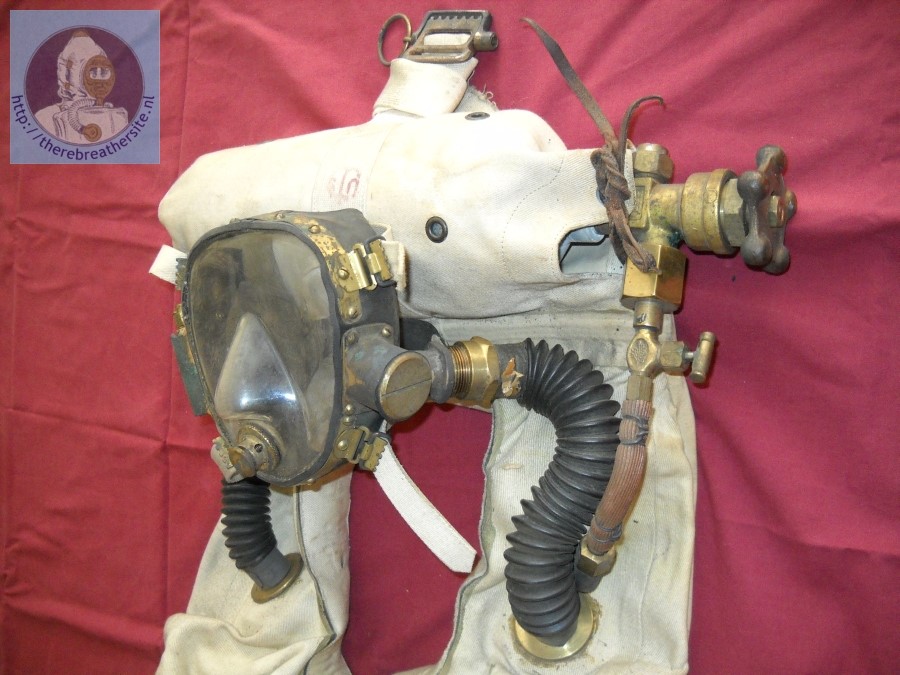
For many years I have tried to find a Desco rebreather. These units are relative rare in Europe. Desco made a A, B and C lung. I have been looking for a C-lung as my holy grail, although Max Nohl his helmet would be even better ;). I was fortunate to find a Buccaneer Lung or B-lung. This page tells you about the history of this lung and his designer Jack Browne. I have made a tear down of this wonderful American oxygen rebreather. Please enjoy some diving history. The shown B-lung was made in 1944 during World War II.
Clik on the blue menu-items to go to that section. Click again on the blue section headername to return to this menu
History
Patent
Overview
Clip for closing the counterlung
Scrubber
Overpressure valve of the counterlung
Breathing hoses
Mask
Oxygen bottle
Metering valve
Weight belt
History of Jack Browne designer of the B-Lung
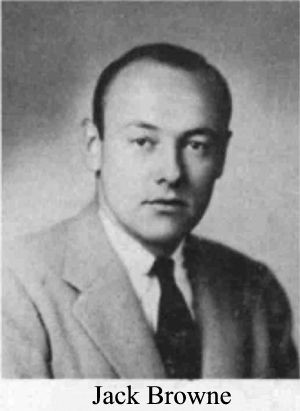
Jack Browne was also a survivor of tin can diving as a boy. His father was an executive with the Goodrich Transportation Company in Milwaukee.
Jack became interested in diving while a freshman in high school. He would take on jobs for pay or just dive for fun.
He also had a knack for invention and his first diving helmet was literally a tin can. In 1934 he was working with Max Nohl diving on local wrecks.
A captioned photo appears in The Milwaukee Journal April 4, 1935 of Jack and his friends Paul Gallun, Fred Lange, and Bob Wescott testing a home made
diving helmet in a Shorewood swimming pool.
When Max Nohl and John Craig began work on the equipment for the Lusitania salvage Jack was ready to pitch in.
The custom diving dress they needed was stitched together from canvas and taken to the N.L Kuehn Rubber Company to be made watertight.
Norman Kuehn was to become a mentor to Jack and an angel to the new company. The Nohl, Browne, Craig collaboration in 1937 resulted in the
forming of Diving Equipment and Salvage Company. Jack was to be president of the new firm but there was a problem. As a principal in the corporation
he needed to be 21 years old. DESCO would not be formally incorporated until May of 1938 when Jack became “legal”.
Mr. Kuehn signed on as Vice President, and a local attorney Earl Wanacek as secretary/treasurer.
DESCO was located in the Kuehn Rubber Co. facility on north 4th street. Kuehn himself provided financial support and business advice.
After the Lusitania project collapsed and Nohl and Craig had moved on to other things Jack determined to keep DESCO alive.
Through 1938 to December of 1941 the small firm plodded along. Jack experimented with new designs for breathing tanks and lighter suits.
With the outbreak of World War Two Mr. Kuehn urged Jack to go to Washington. “Tell the Navy what you know about diving suits.
Show the boys what you have done and can do.” Jack did. In January of 1942 he headed east and returned with a $5000 order for three self-contained suits.
That first order led to others until DESCO was producing more diving equipment than anyone else in the world.
Jack and DESCO were major contributors to the Navy war effort. DESCO/Navy collaborative efforts led to the development of the Browne Mask,
Lightweight Diving Suit, and Buie Diving Helmet. Navy Doctor Albert Behnke worked with Browne and Dr. End on refinements in deep diving on Helium.
Emerson Buie came to DESCO with his idea for a low volume diving helmet to deal with mine clearance in harbors.
The US Office of Strategic Services asked Jack and DESCO to build them compact Oxygen rebreathers for covert operations.
Along with special development projects was the day to day operation of a company supplying 80% of the country’s diving equipment needs.
By 1945 DESCO had its own pressurized wet tank for research and development. On April 27, 1945, Jack used this tank to “dive” to still a new
record depth of 550 feet of seawater. As in the case of Nohl’s earlier dive, he breathed a heliox mixture under the supervision of Dr. End.
Both dives were milestones in the development of modern techniques of mixed-gas diving. Max Nohl was asked how he felt about Jack breaking his record.
Max replied “records are made to be broken”.
In 1946, Norman Kuehn and Jack Browne sold the company to the general manager E.M Johnson and a group of investors.
Jack moved on to help run the family automobile dealership Browne Motors Chrysler Plymouth on 20th Street & North Ave. in Milwaukee.
In June 1949 he became president of the dealership after his father George passed away.
Jack makes the local papers occasionally, most notably for a bridge on the Fox River in Green Bay having to open so he could land his seaplane.
He also made the paper with a story on the spider monkey he keeps on his yacht.
Not much more was heard from him until 1958 when he is flying guns to Fidel Castro’s Cuban rebels.
He is forced down by the Batista Cuban Air Force and imprisoned. Browne managed to escape from prison and steal back his plane.
On the flight to Florida he runs out of fuel over the Florida Keys. He was rescued by the Coast Guard.
Jack retired to the Virgin Islands and passed away in 1998 from a heart attack.
Source: with kind permission of the Desco corporation.
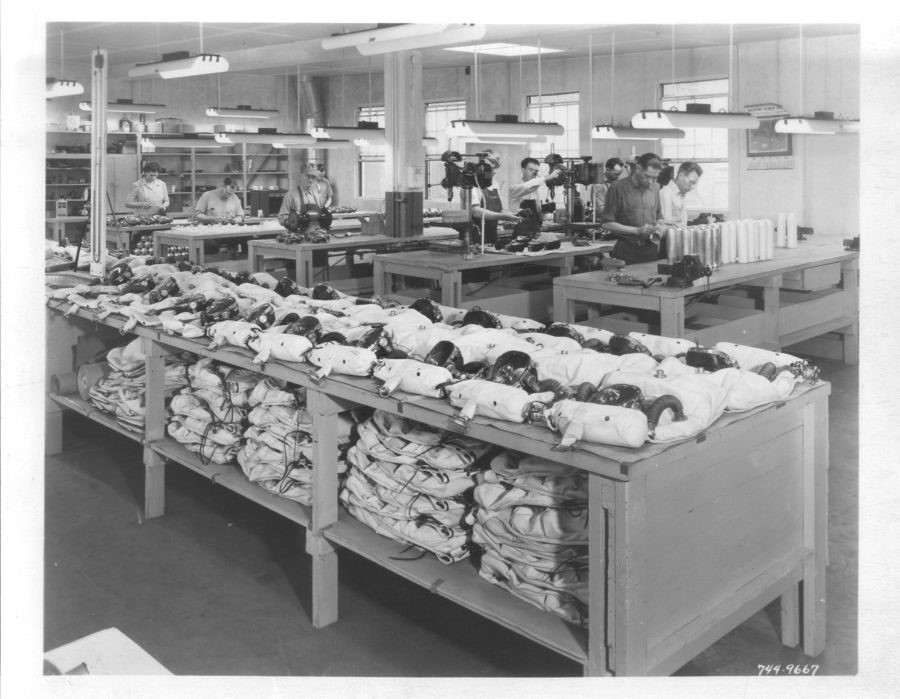
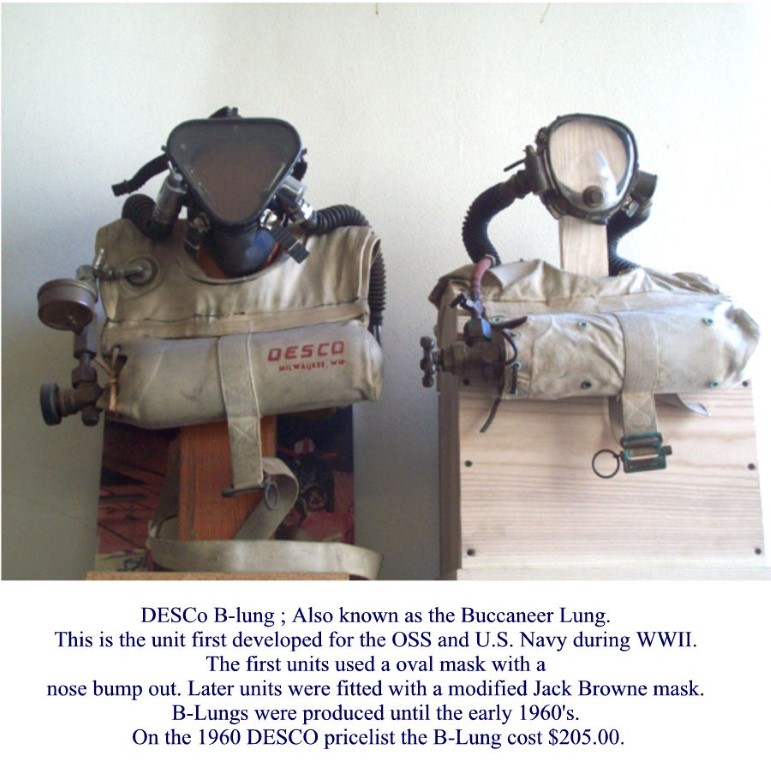
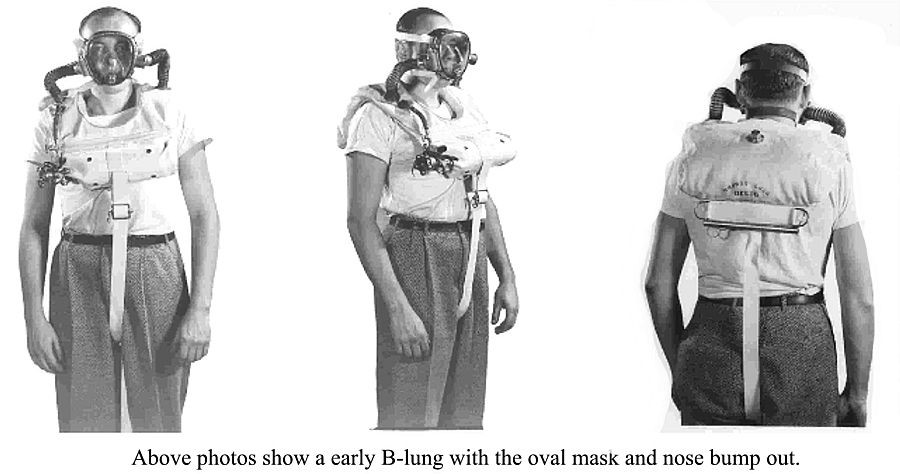
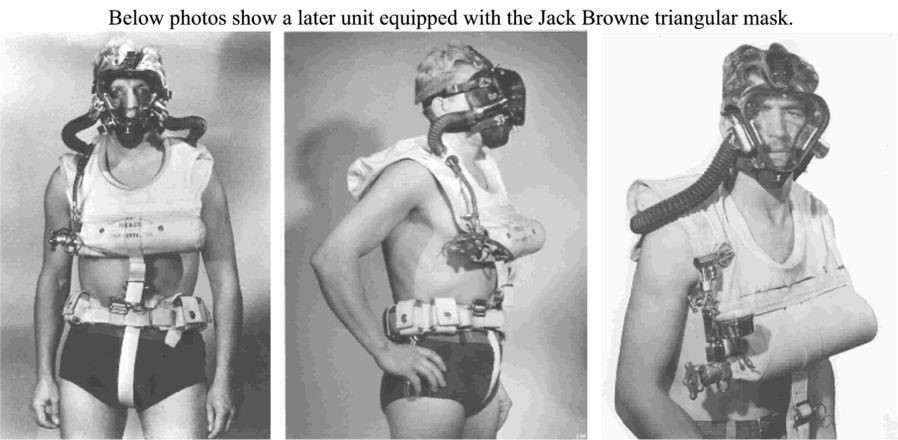
Patent
When I looked at the Browne patent, first thing that I noticed was the unit was designed with the counterlung in front of the diver! All photos show the unit with the counterlung on the back! This is a very strange thing since there is also an extra valve placed on the lungside as shown in the patent. It looks if the unit was turned for the picture later. The following picture shows the unit in use as described in the patent!
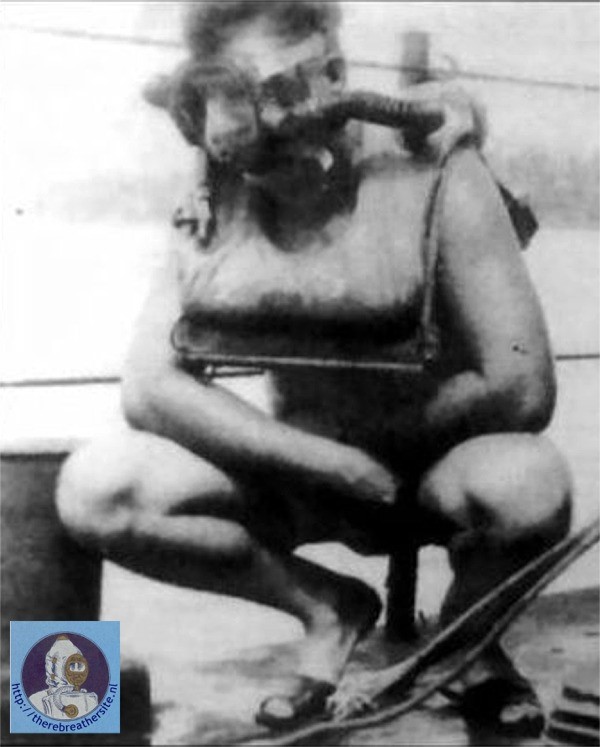
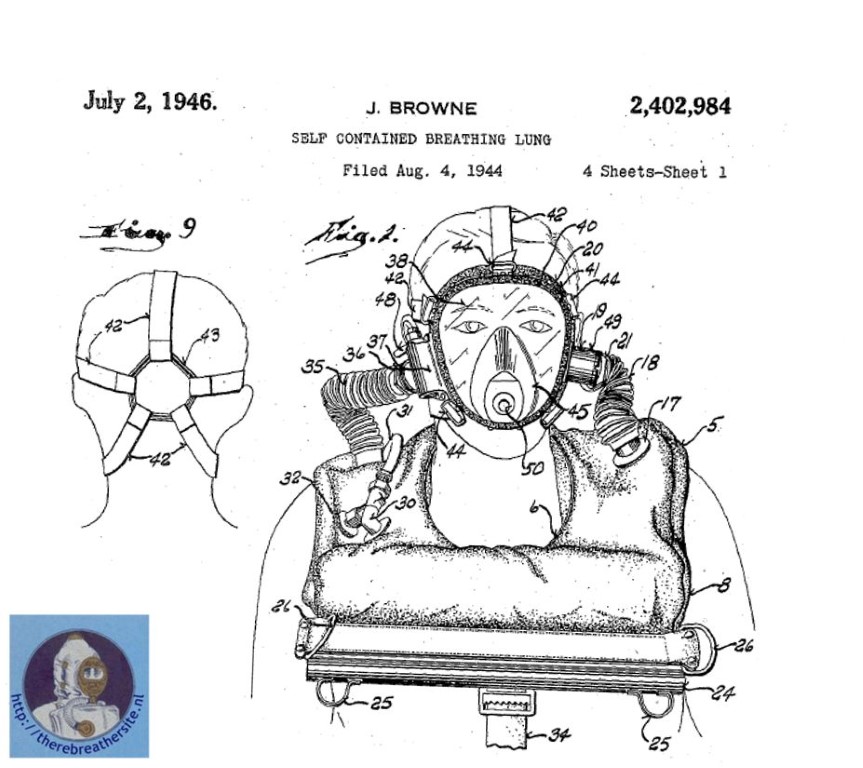
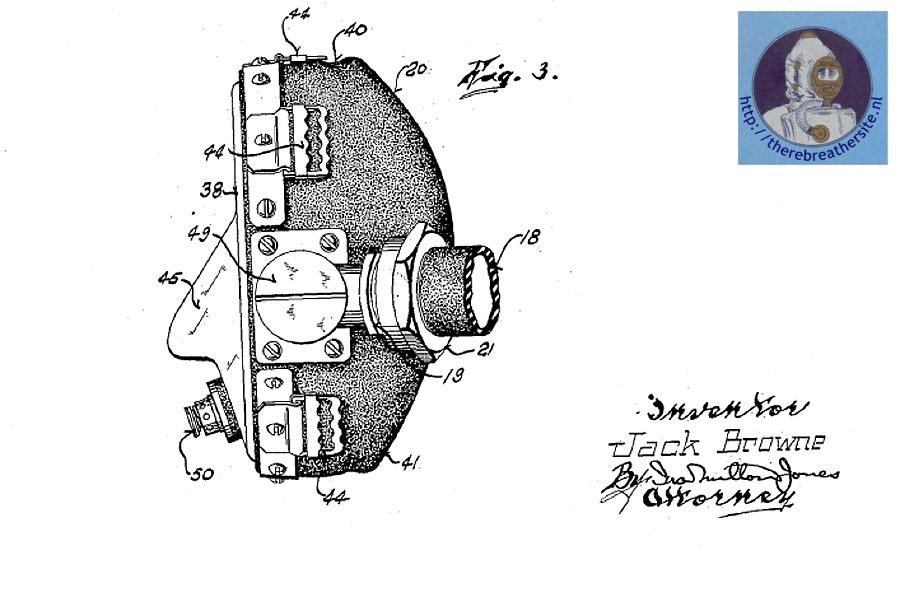
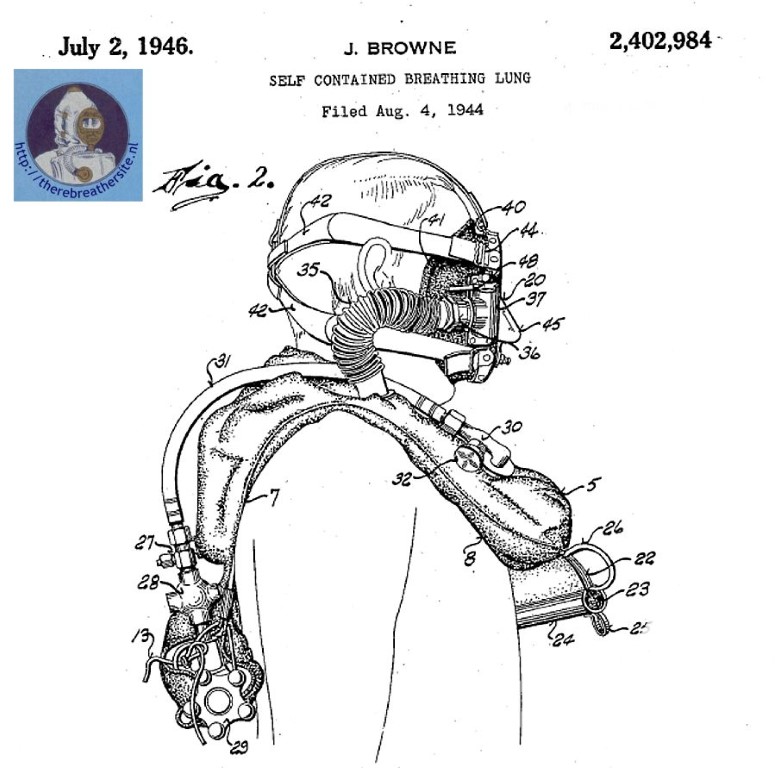
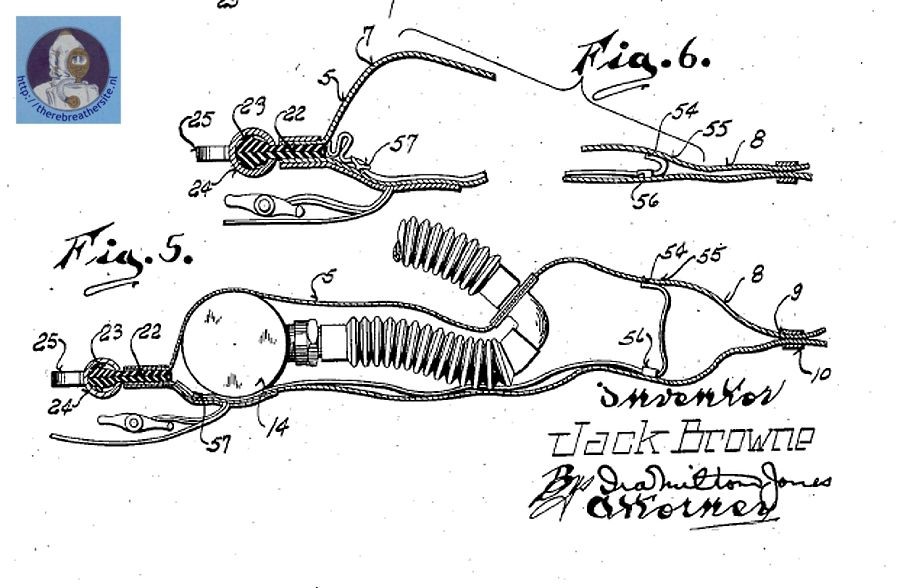
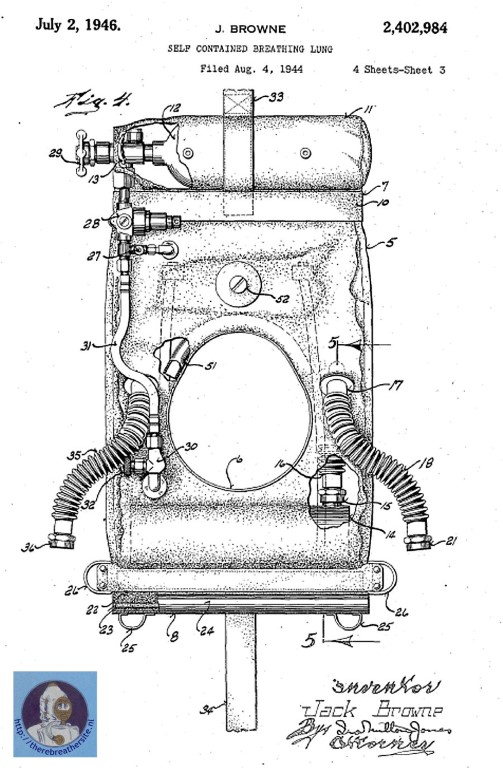
Overview
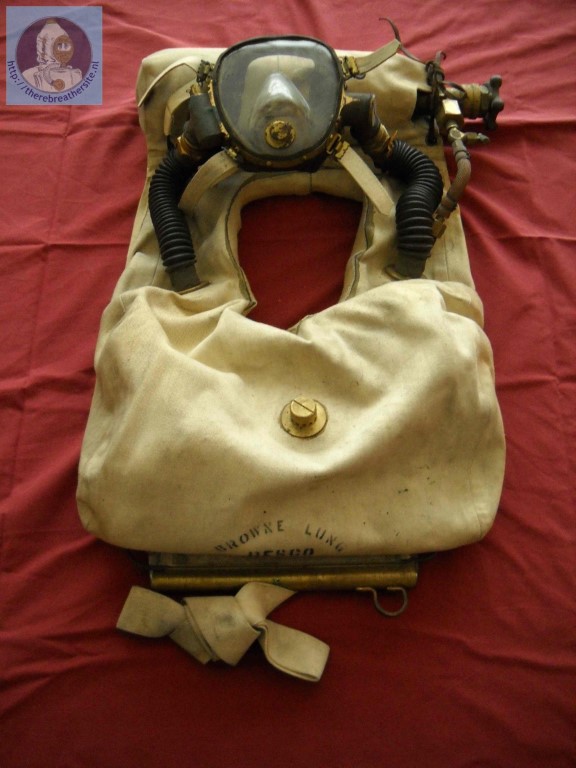
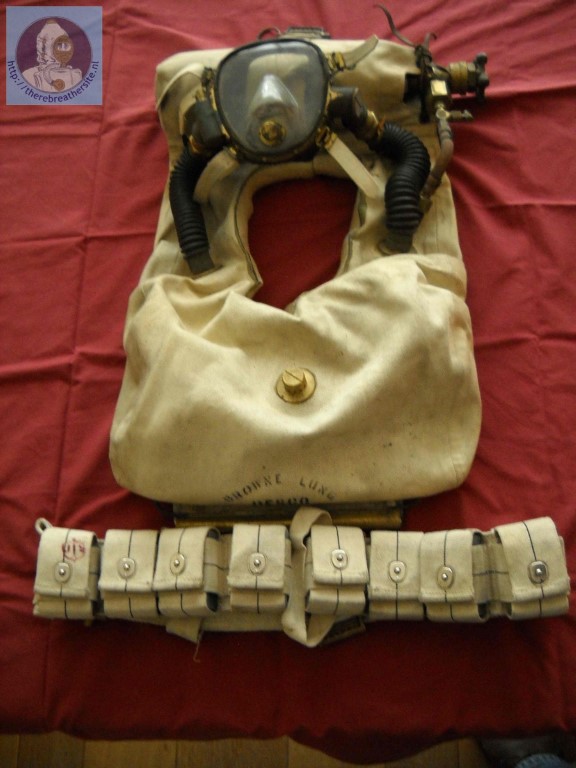

Clip for closing the counterlung
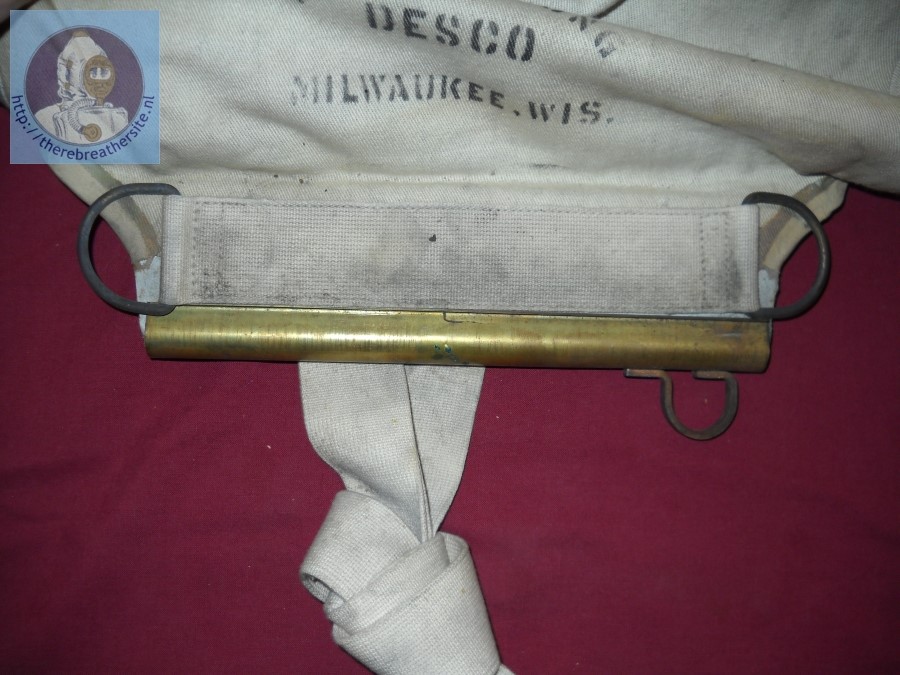
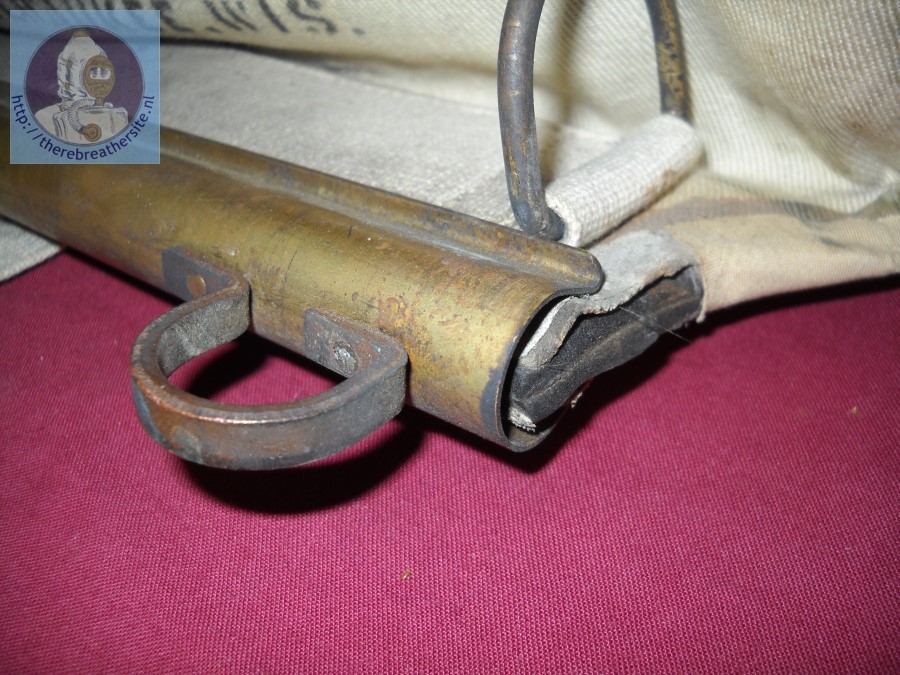
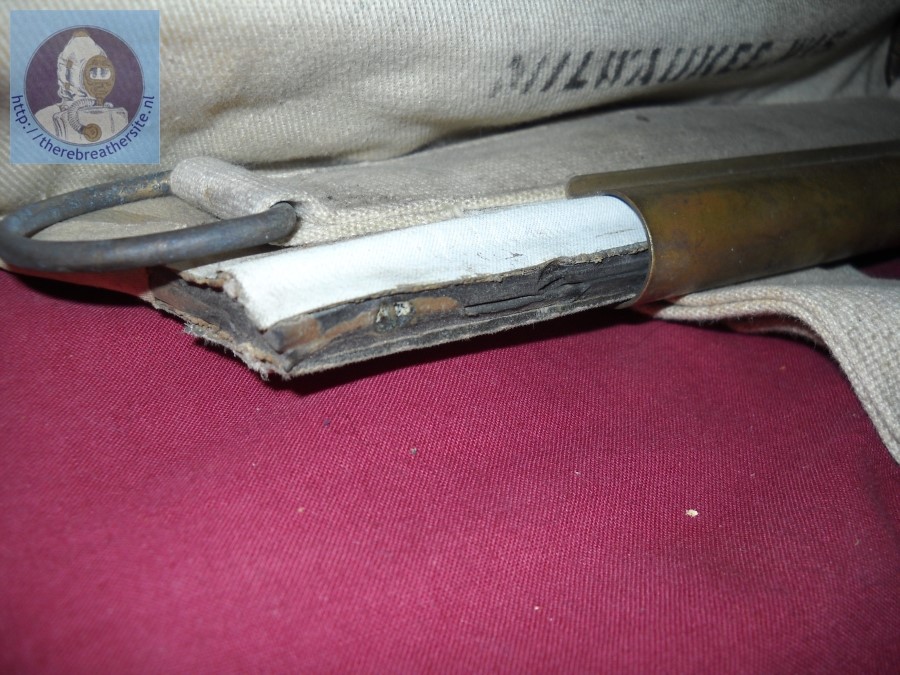
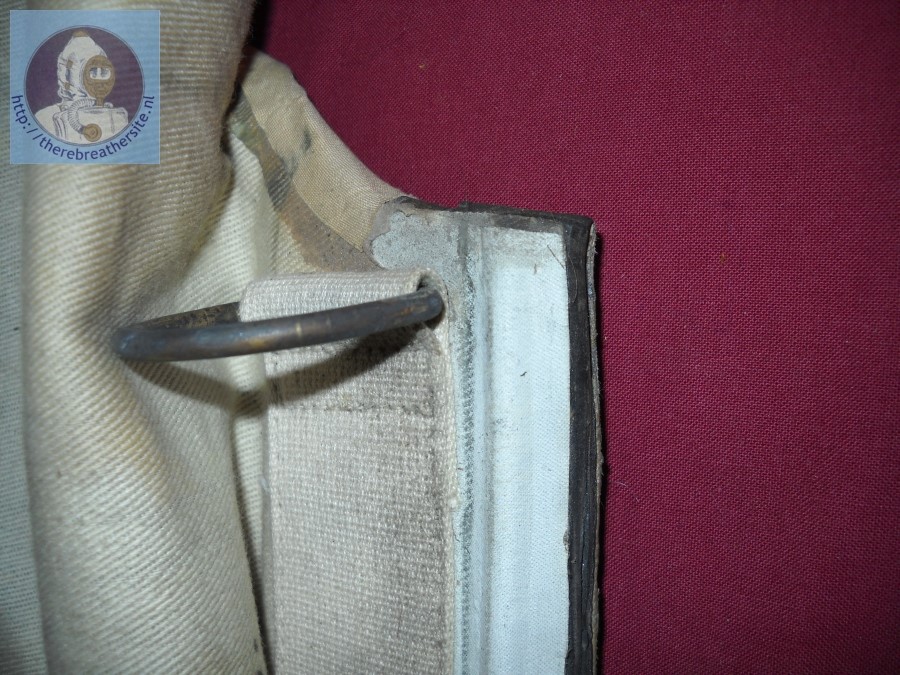
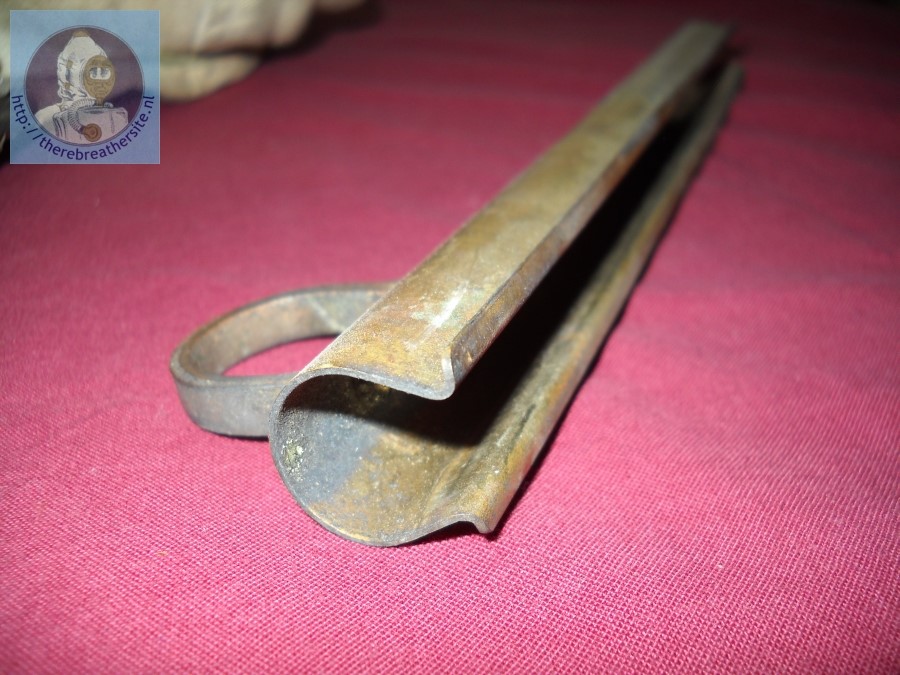
Scrubber
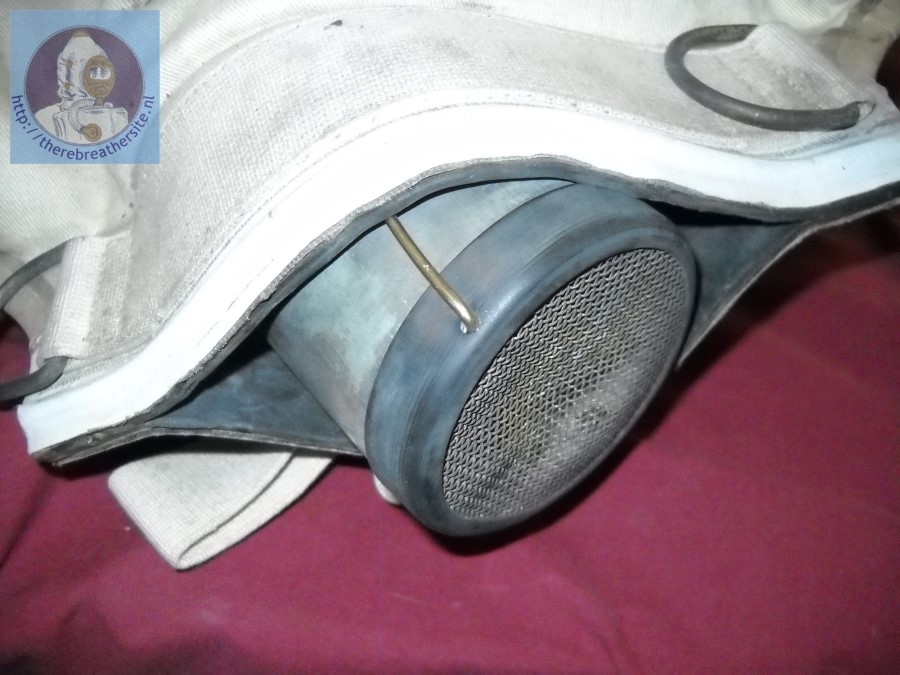

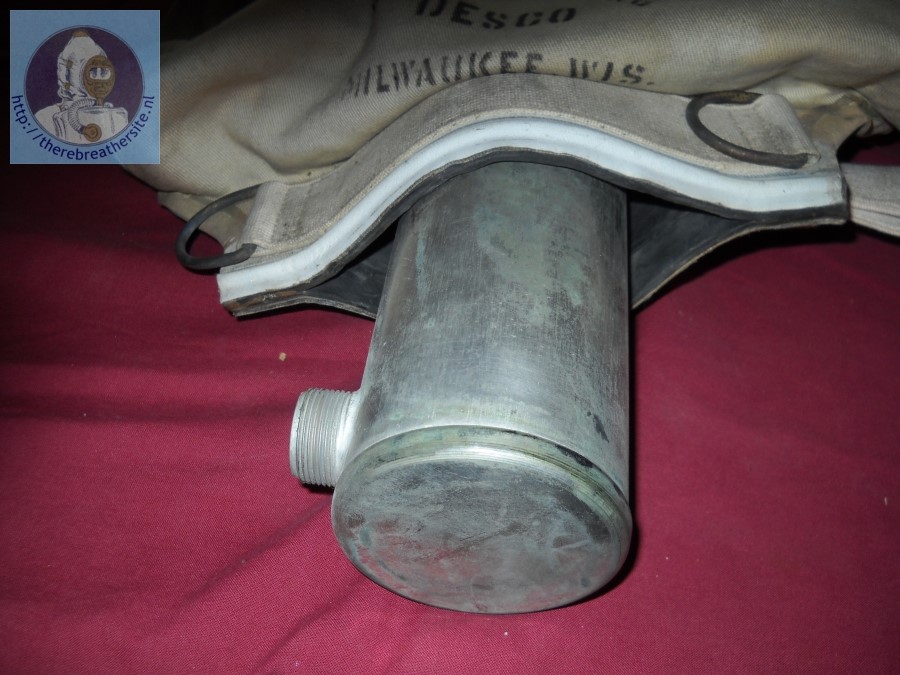
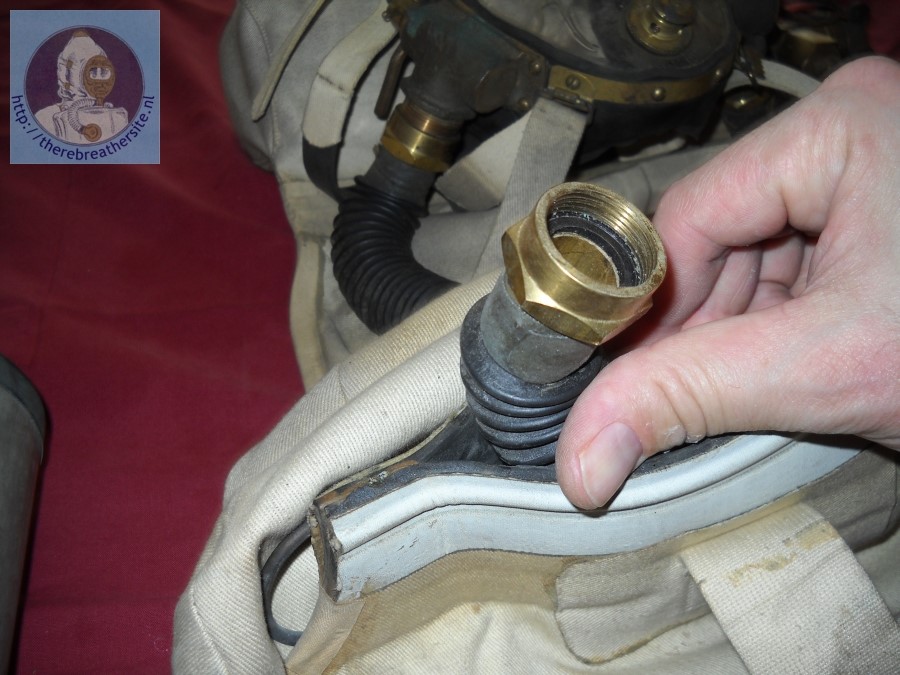
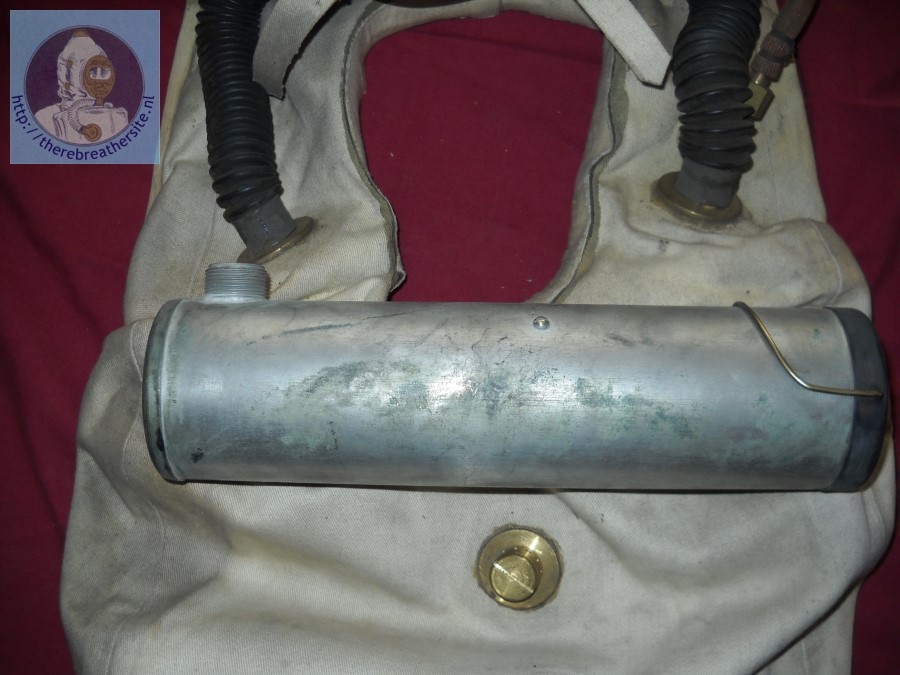
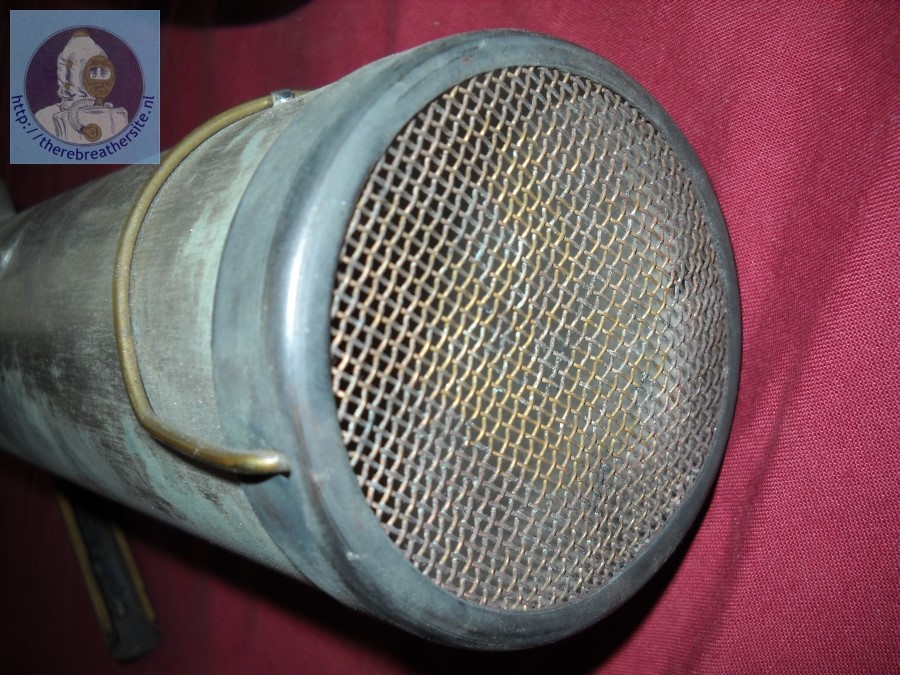
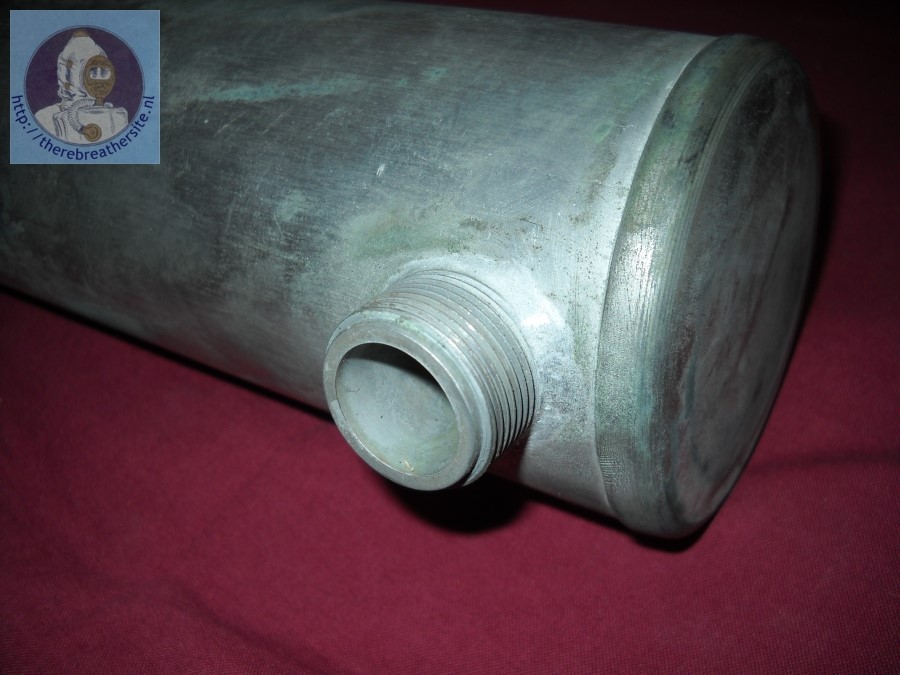
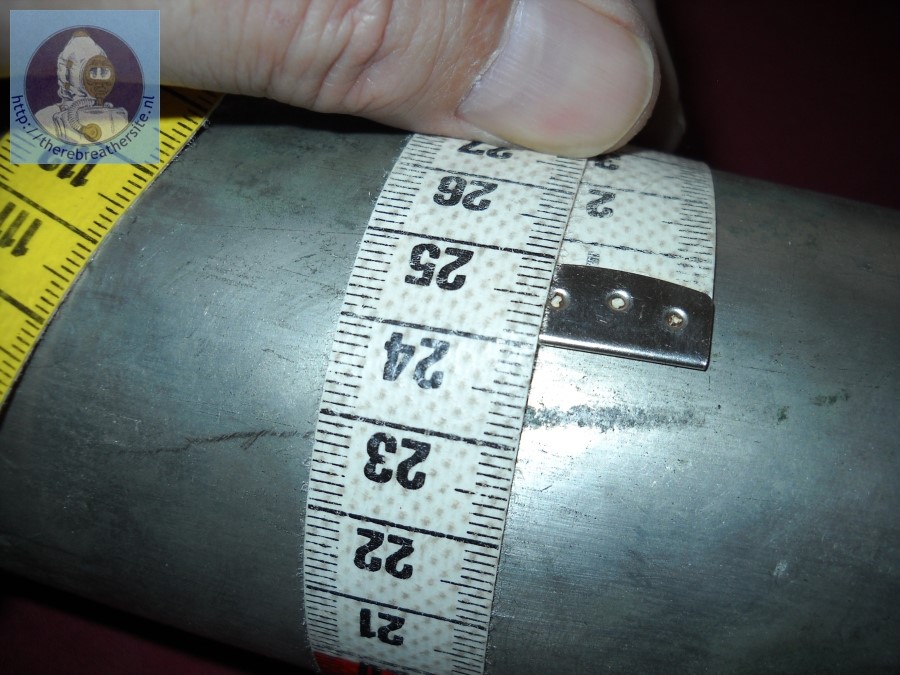
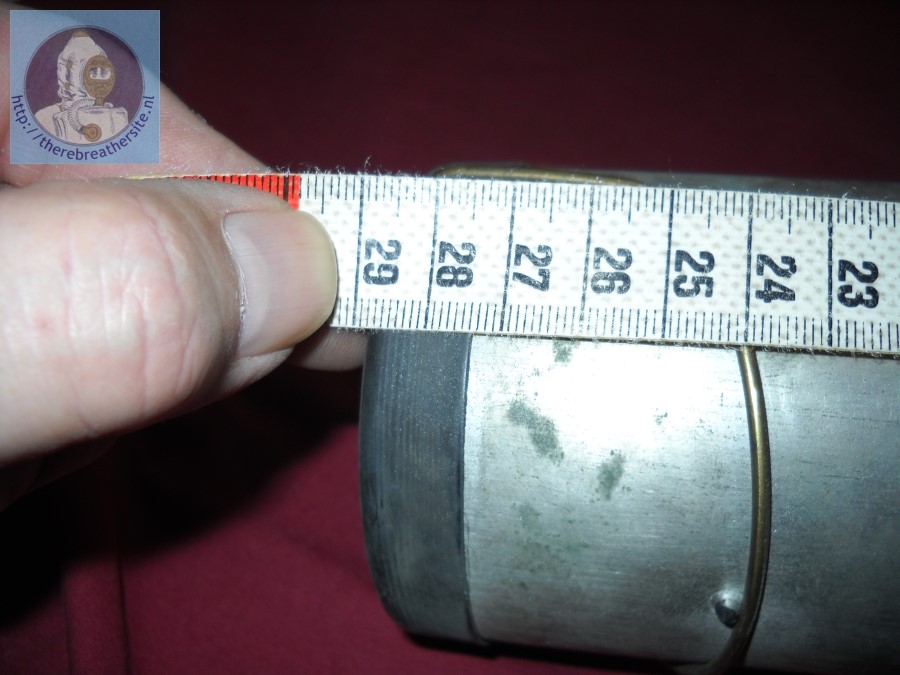
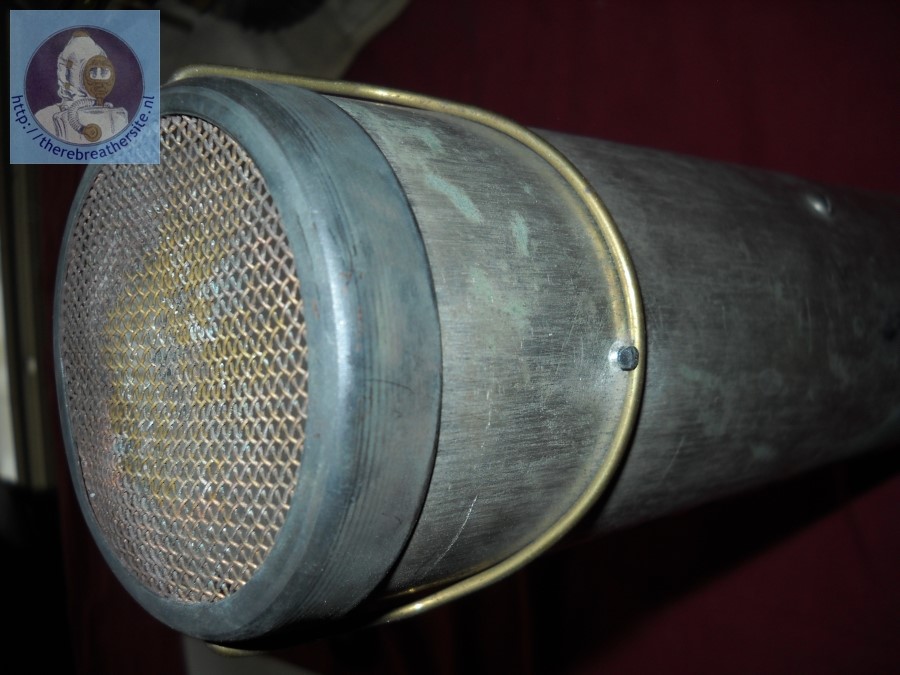
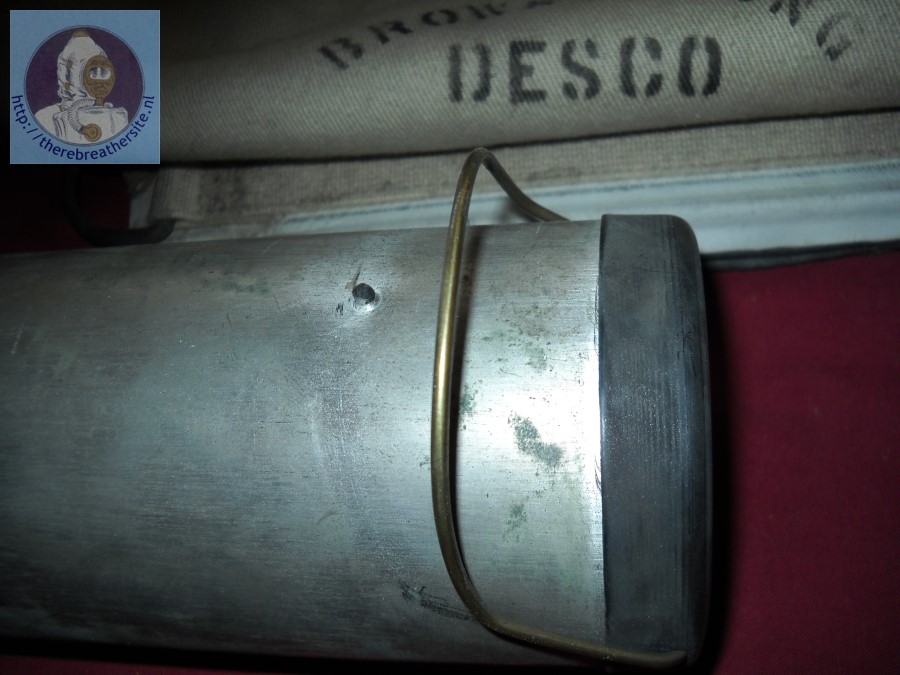
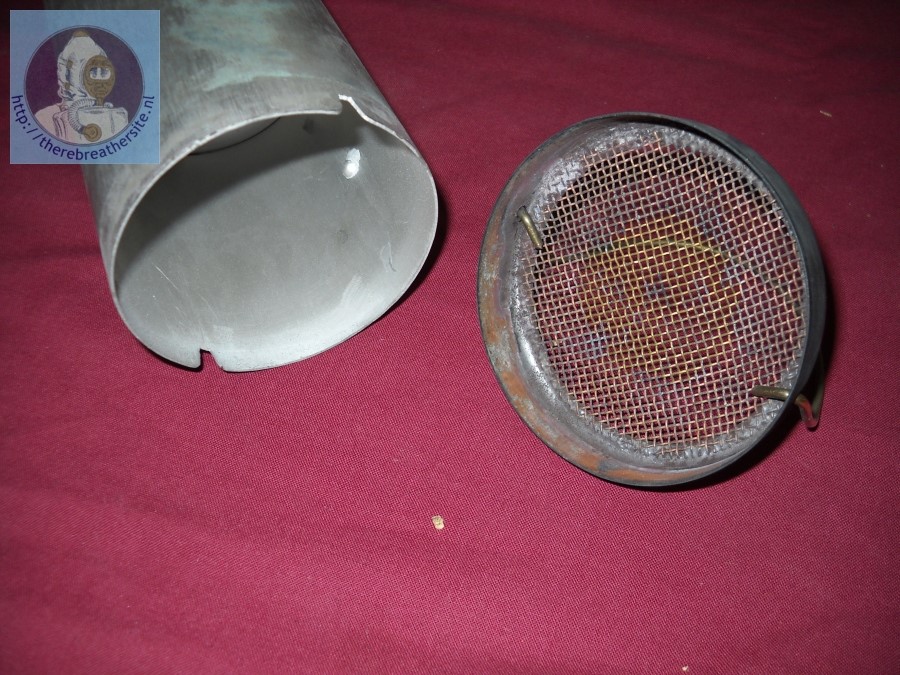
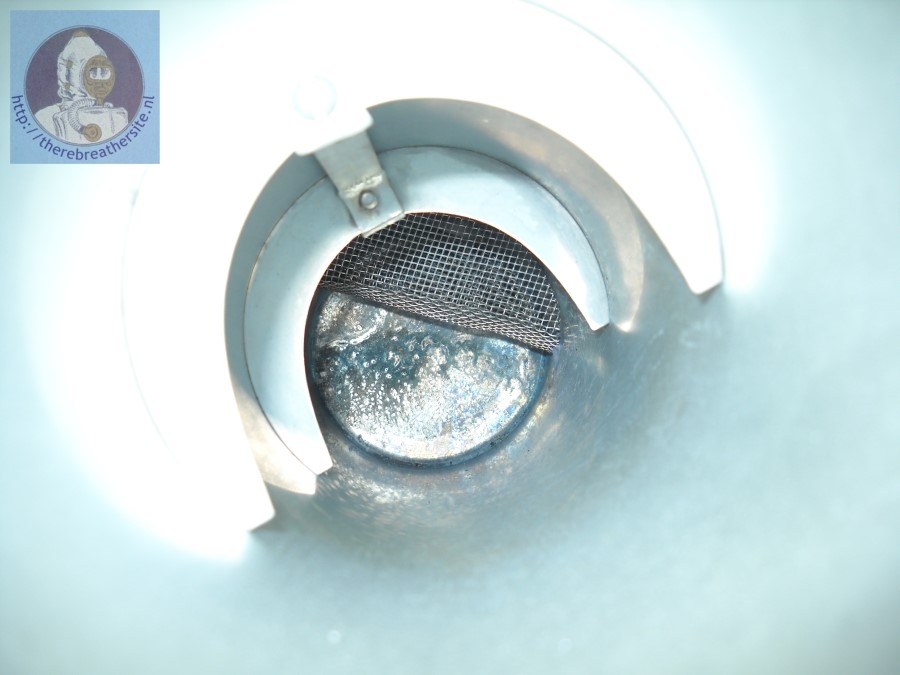
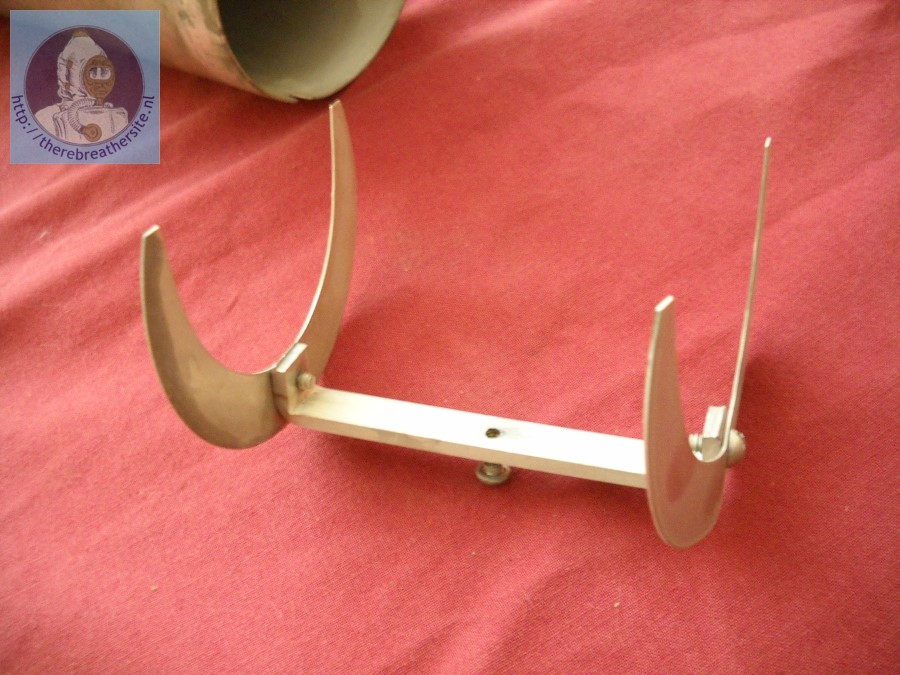
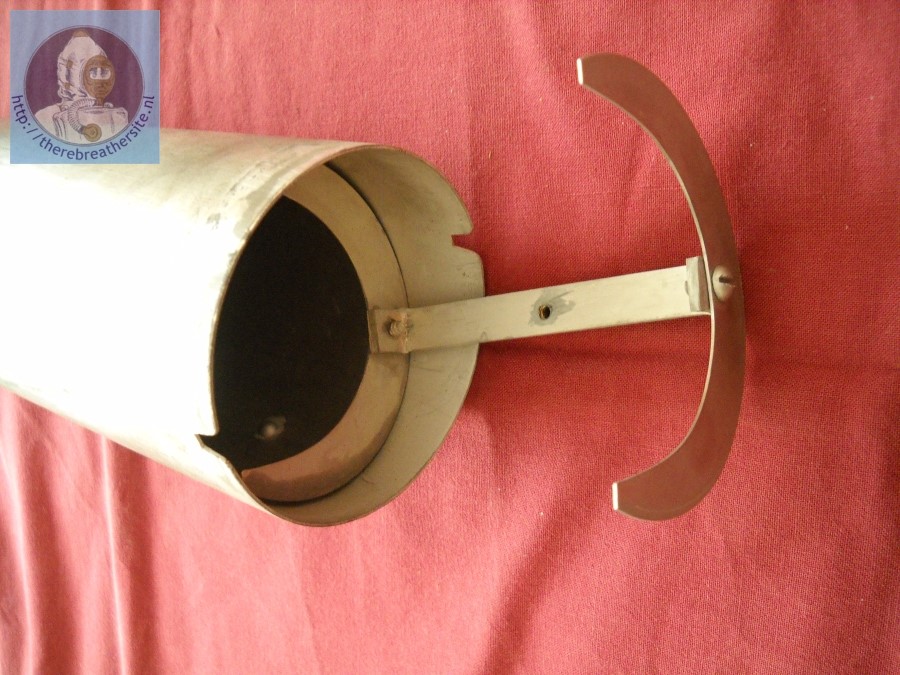




Overpressure valve of the counterlung

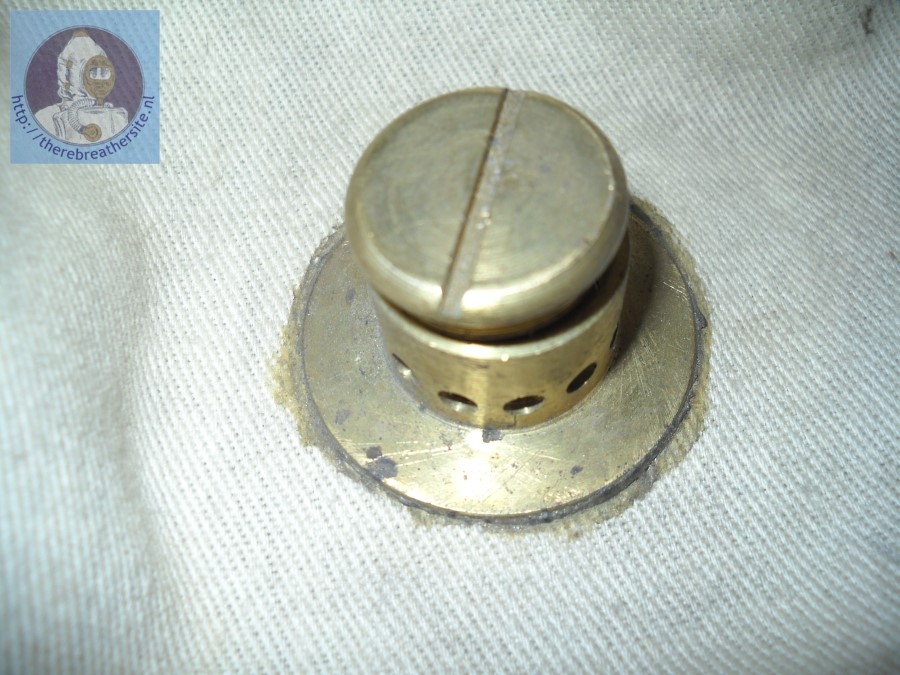
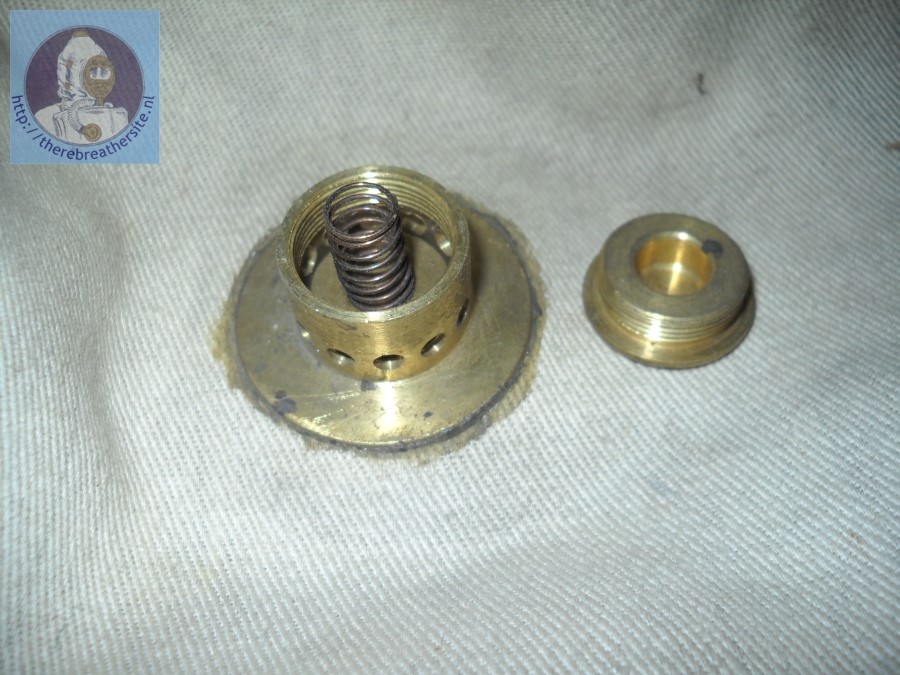
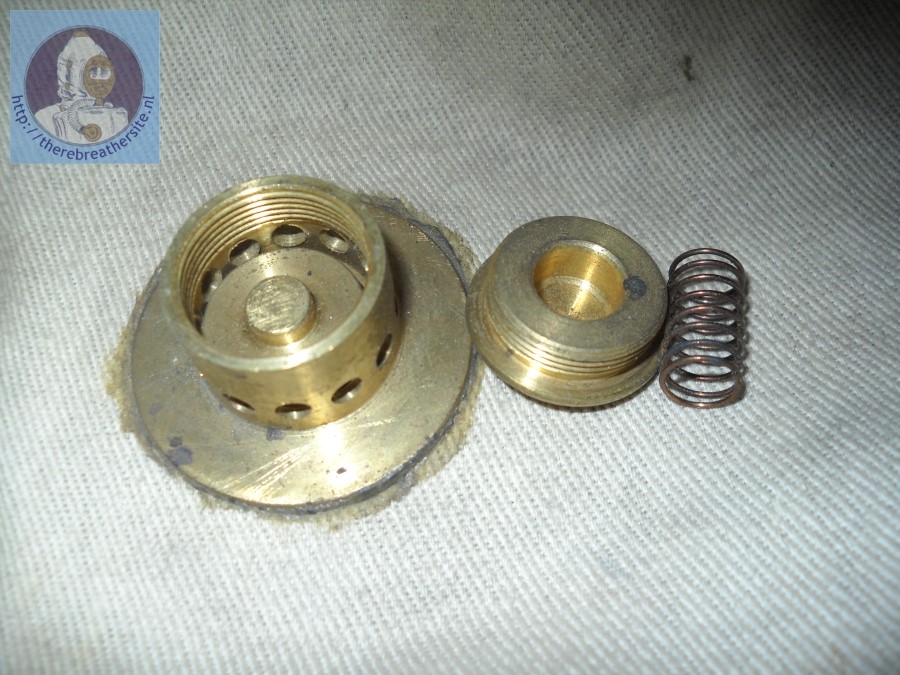
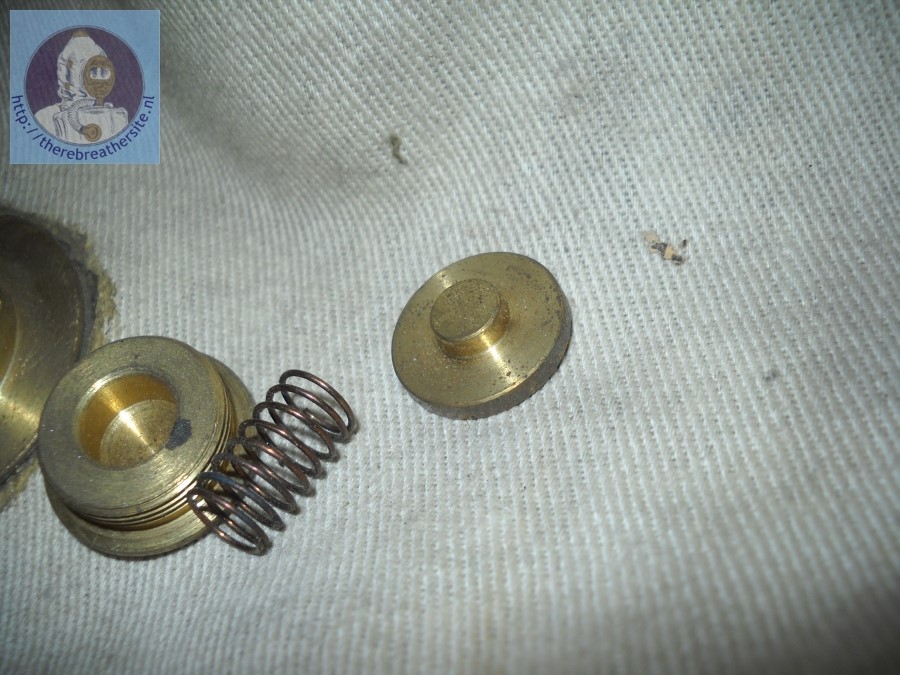
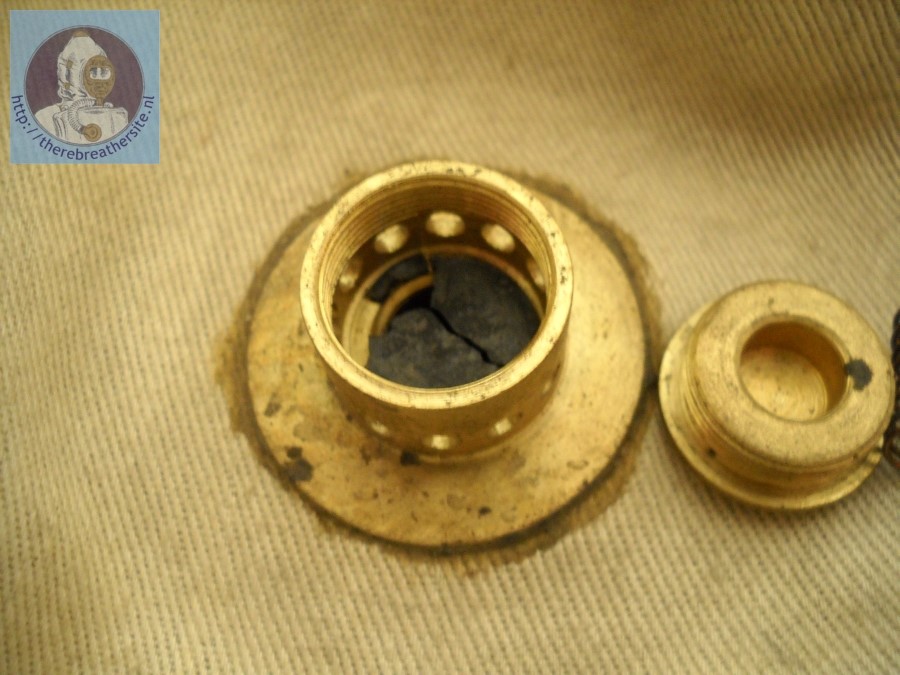
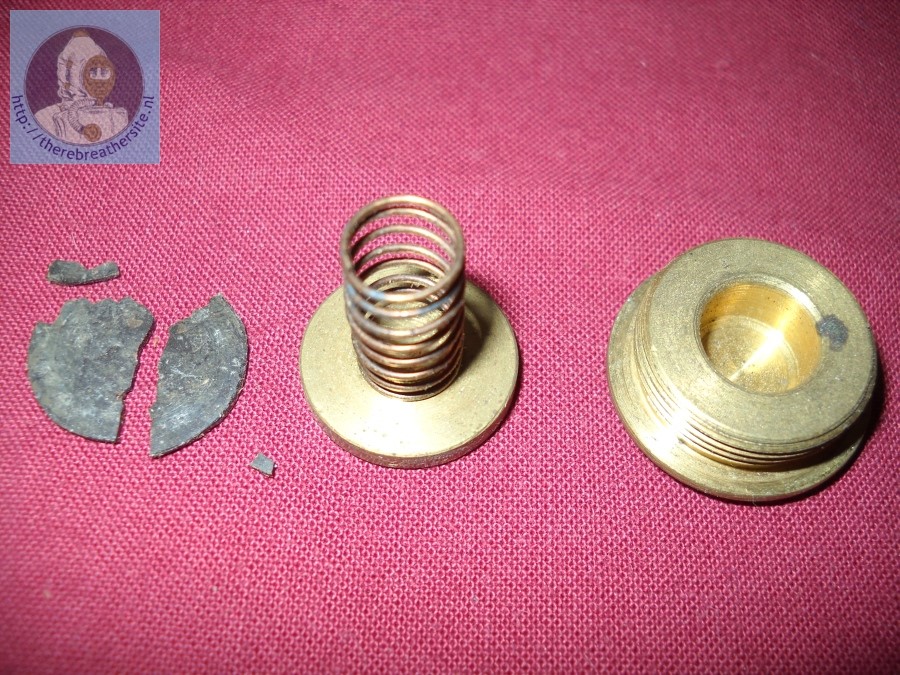
Breathing hoses
Early rebreather all have small diameter valves and hoses. This unit is no exception. Although the unit was used to 33 ft (10mtr) the work of breathing must have been relative high. Today diving to 10 mtrs on pure oxygen is not common and called very dangerous due to the partial pressure of oxygen of 2.0 bar!

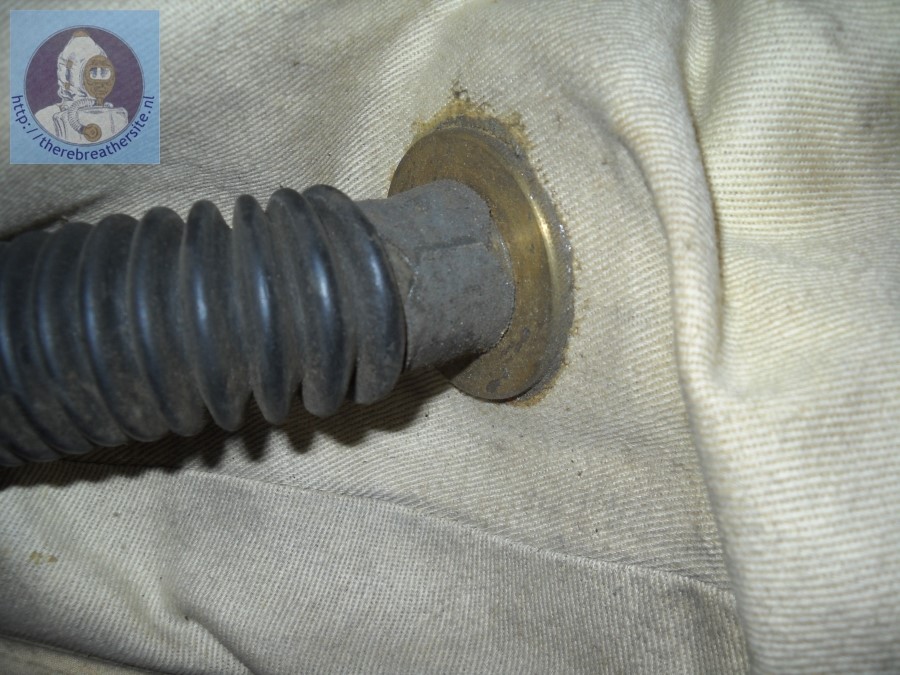
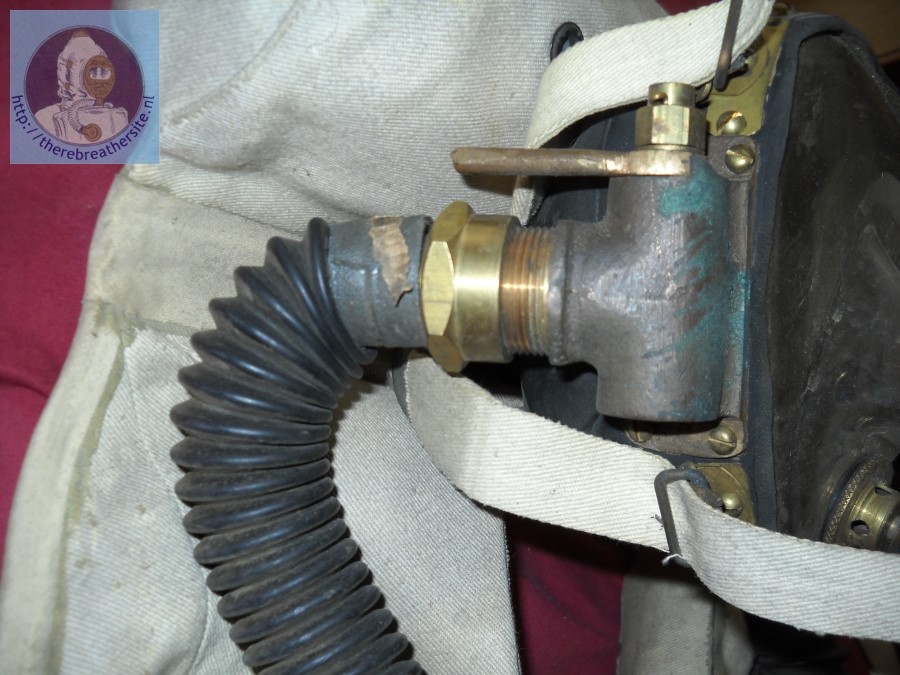
Mask
The mask of the B-lung is a piece of art. It has brass parts made with craftmanship and machines to very high quality parts. Valves are made extremely simple so every diver was able to maintain the mask themselves!
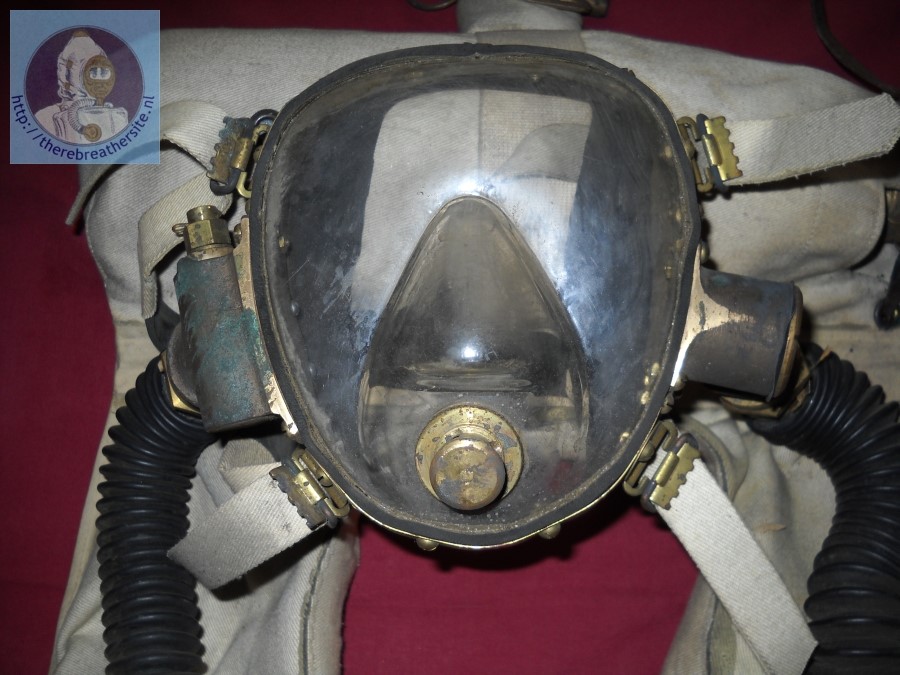
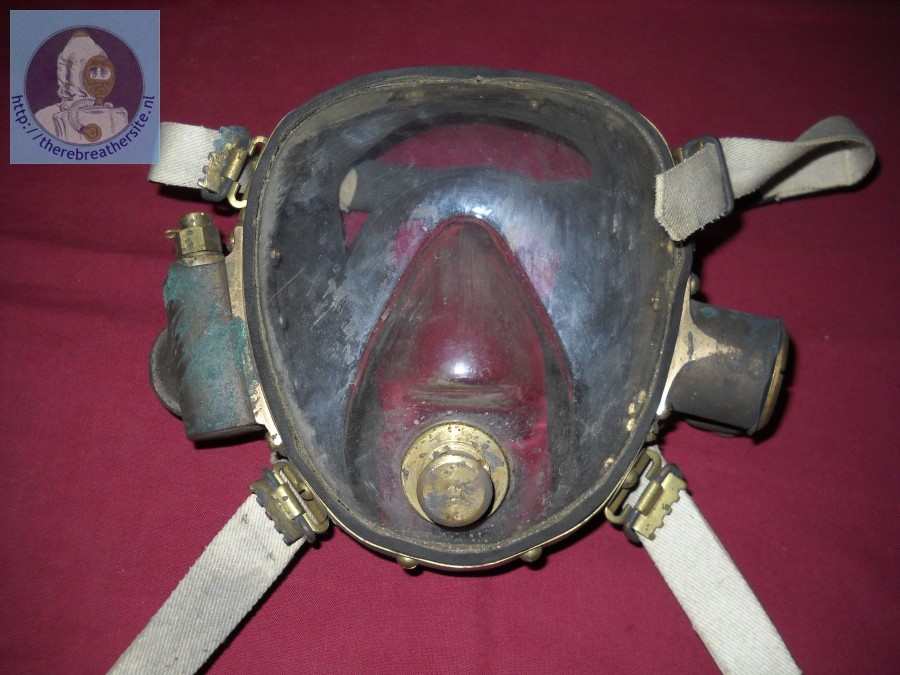
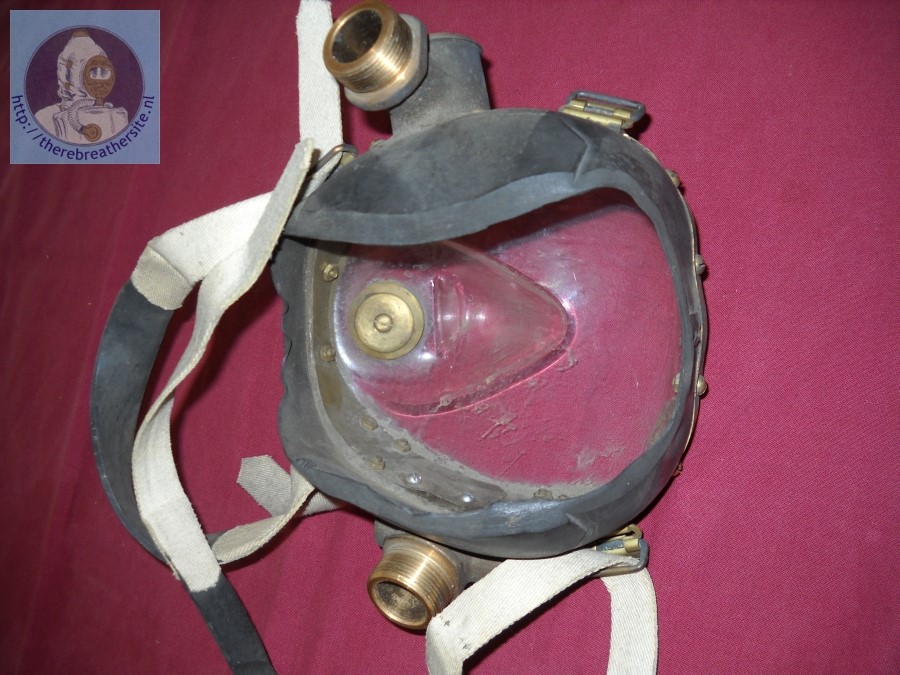
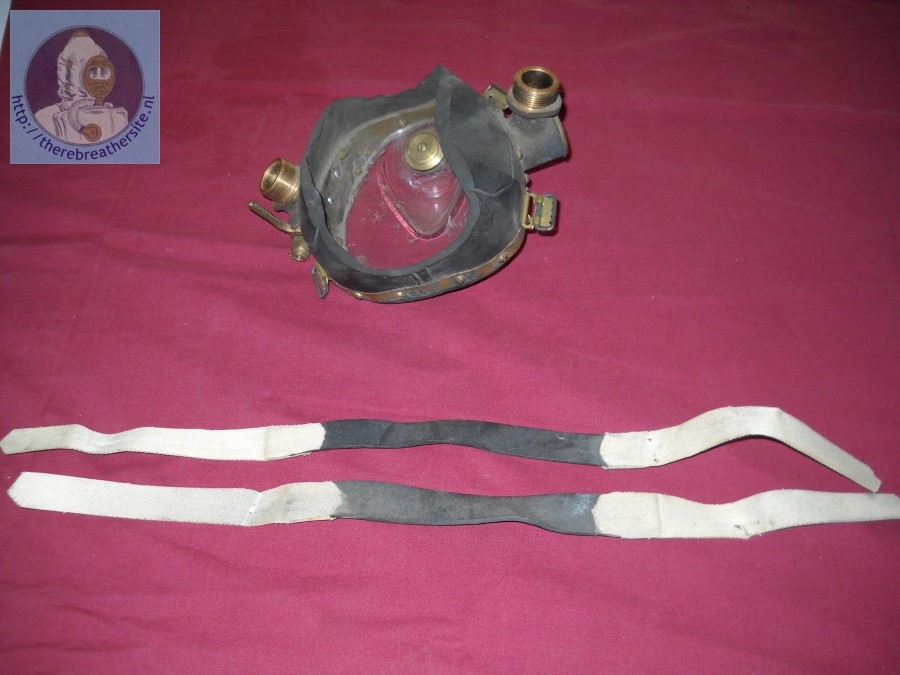

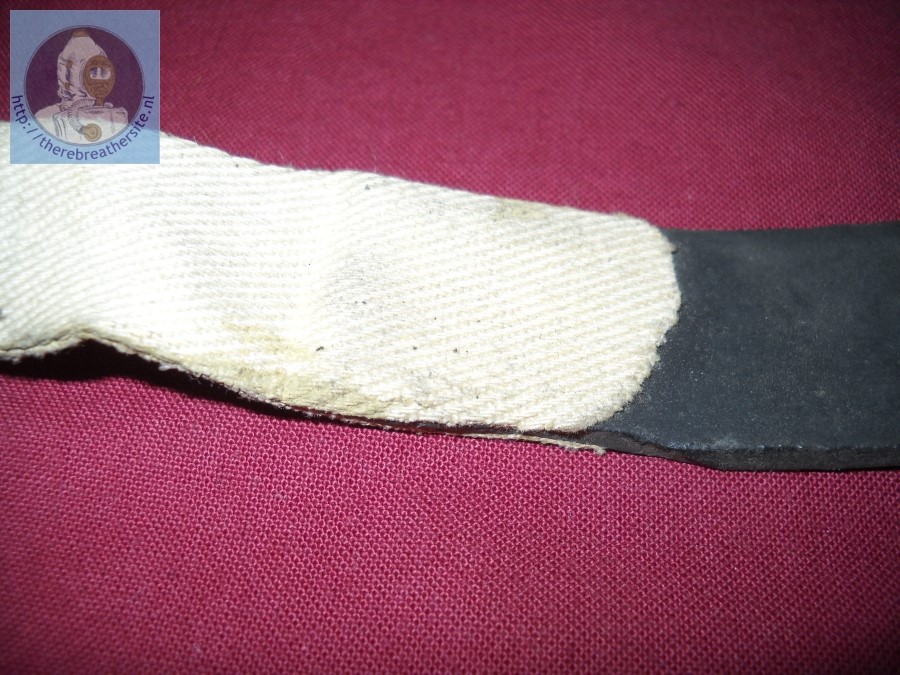
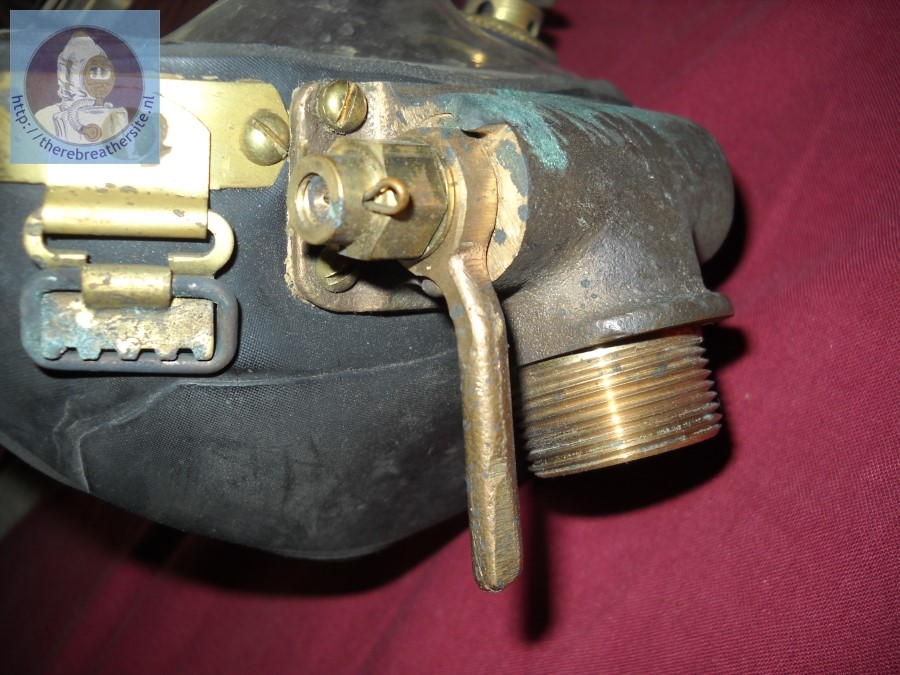

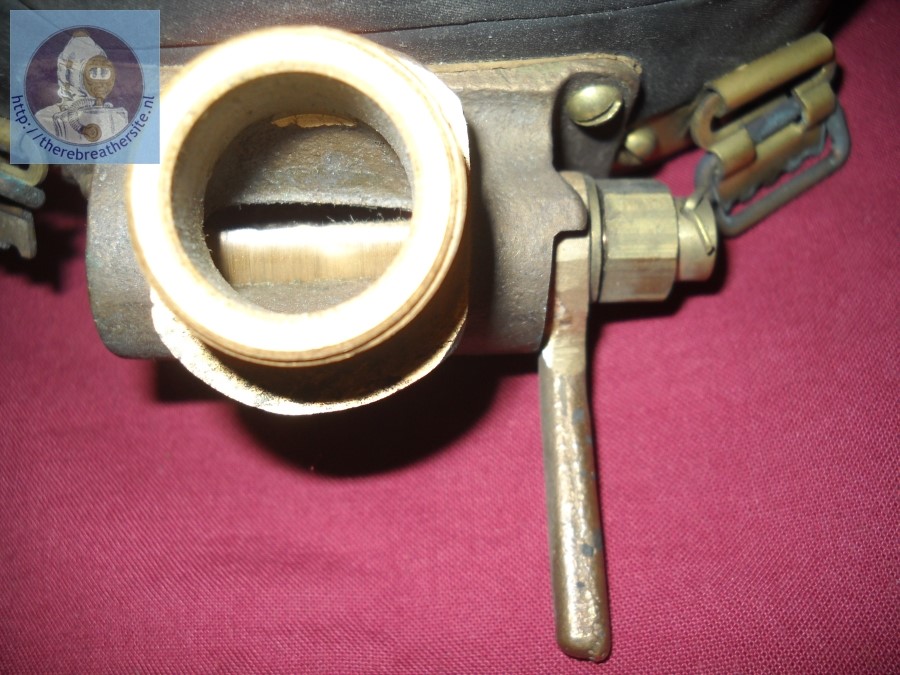
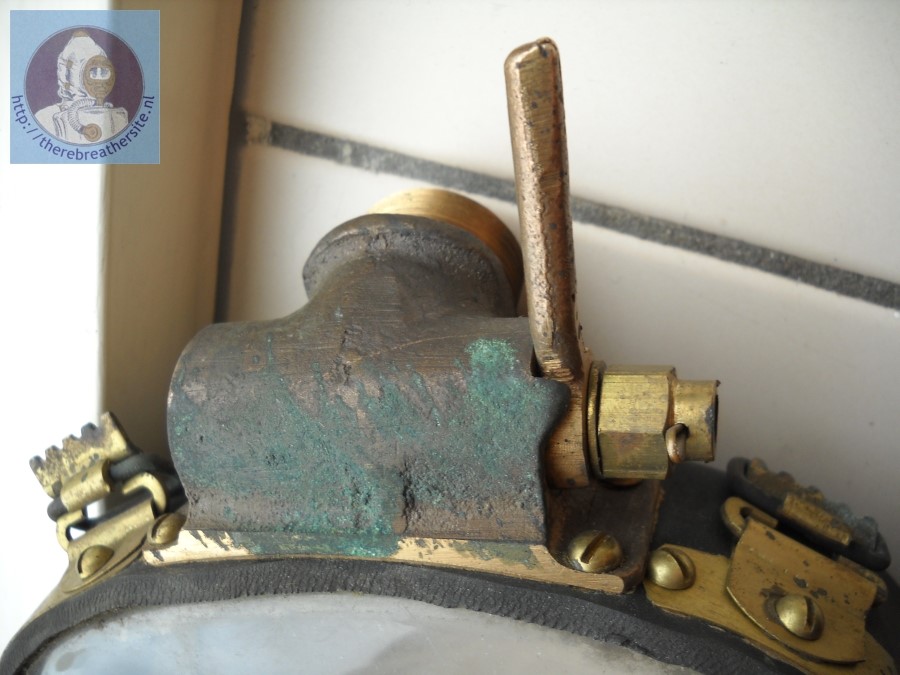
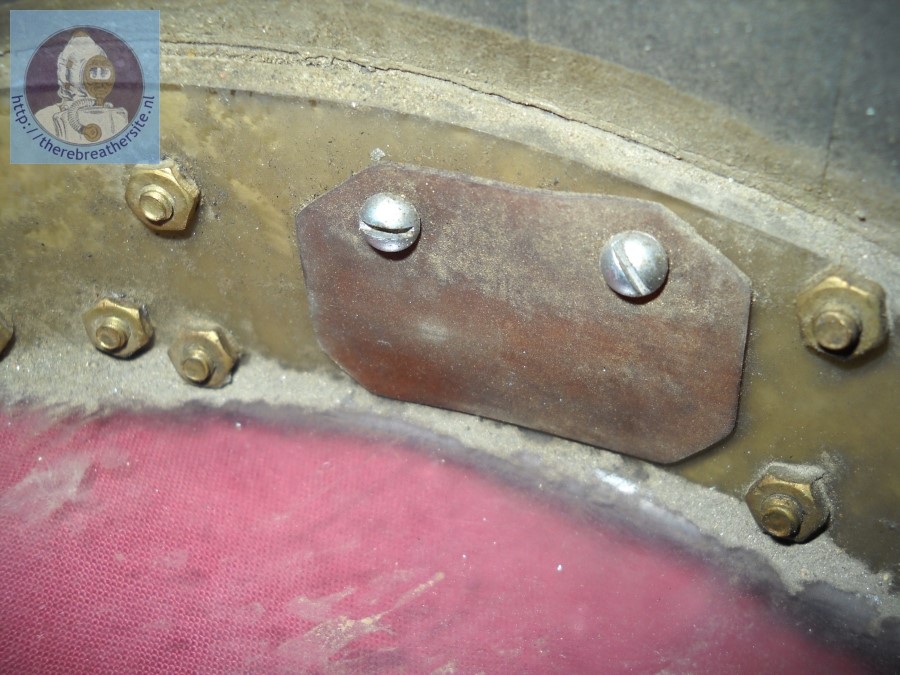
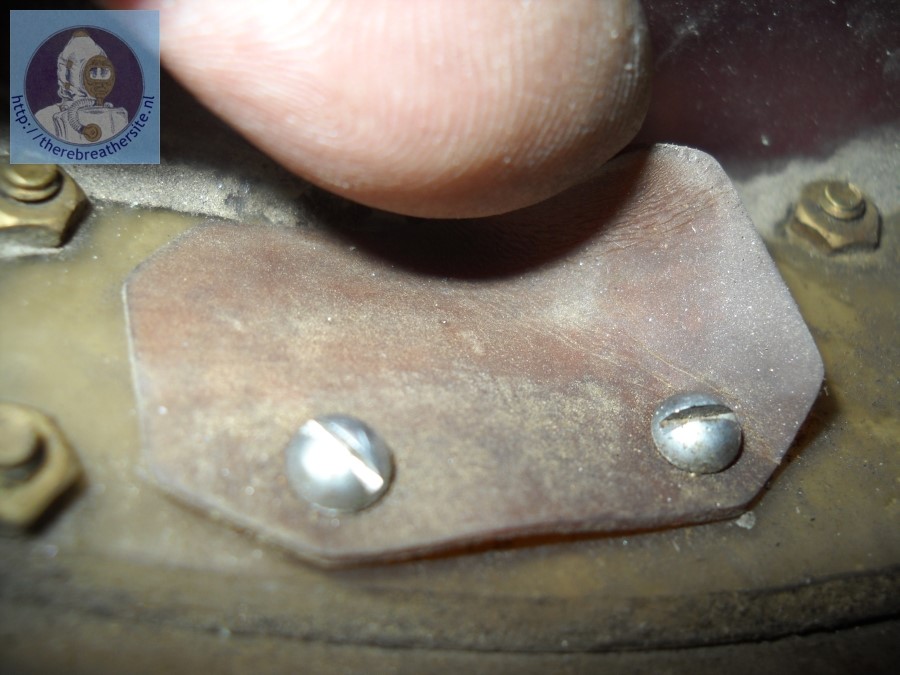
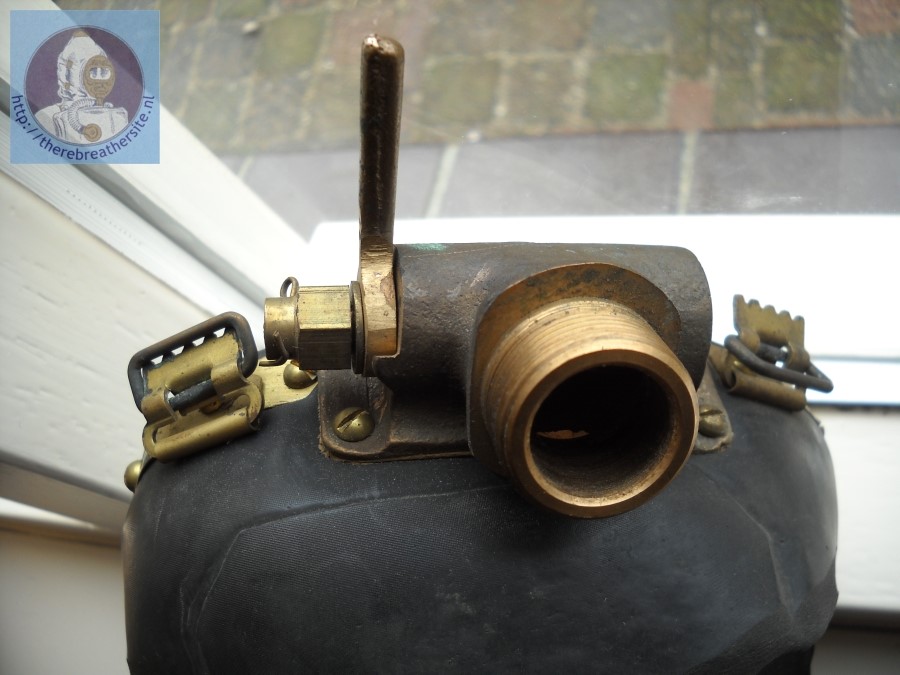
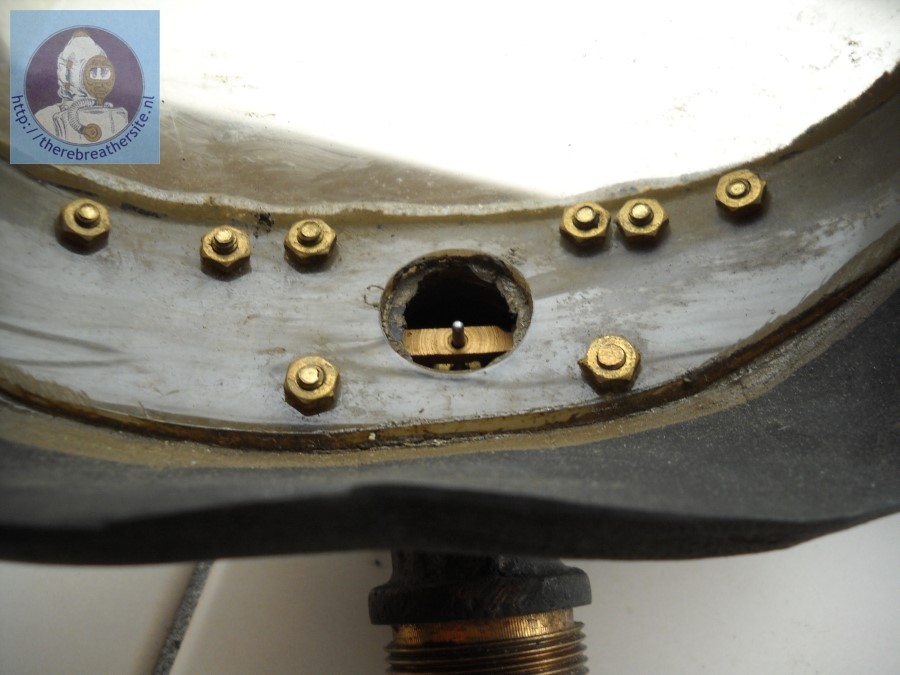

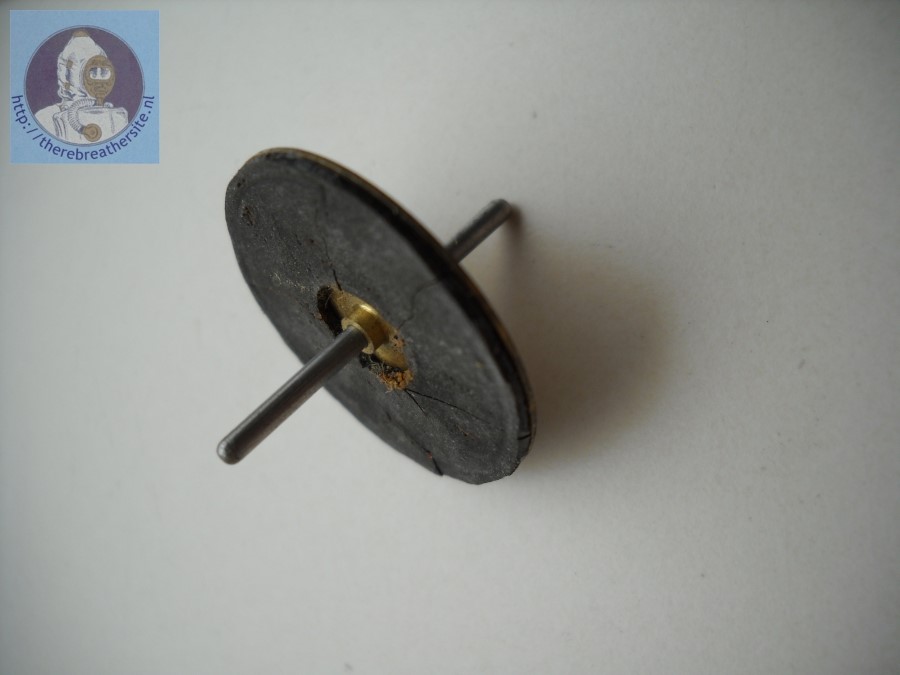
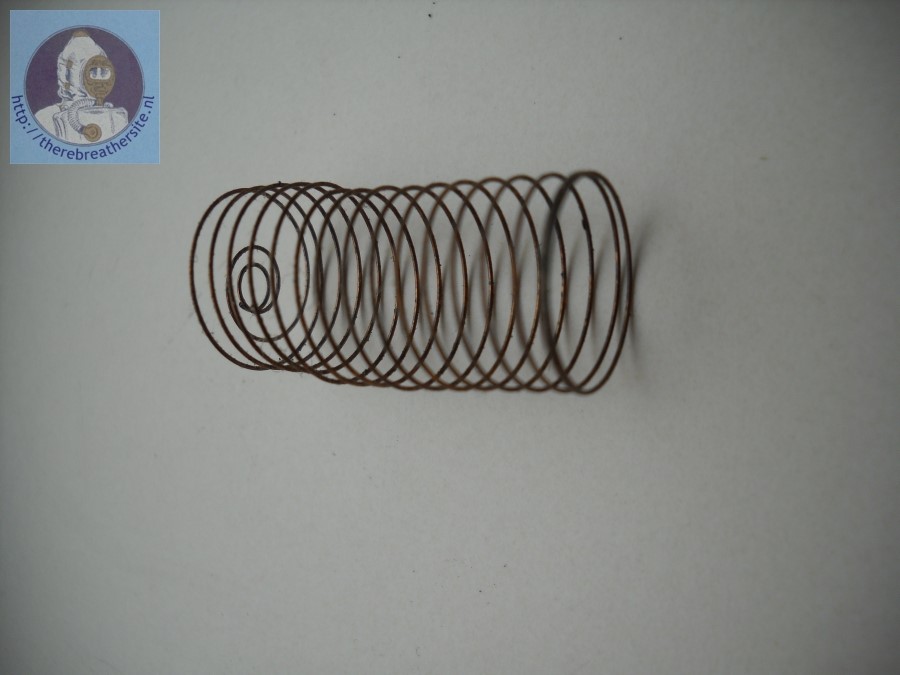
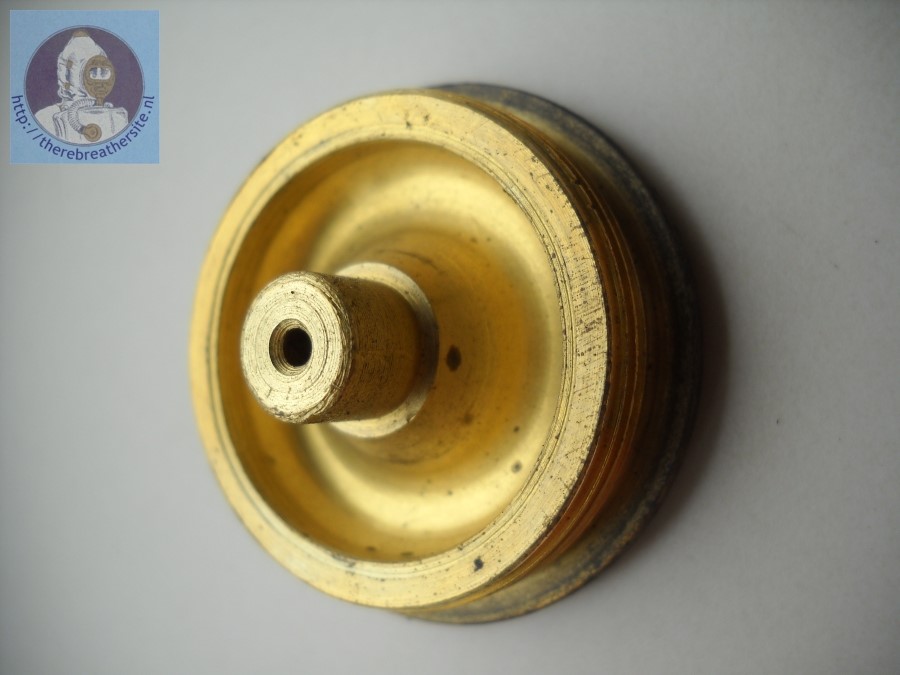
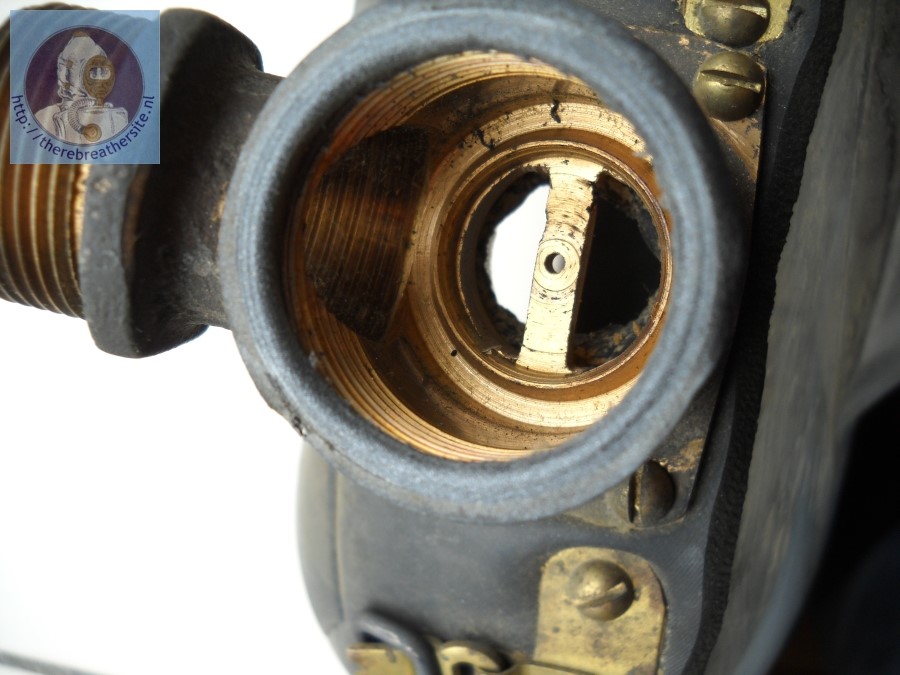
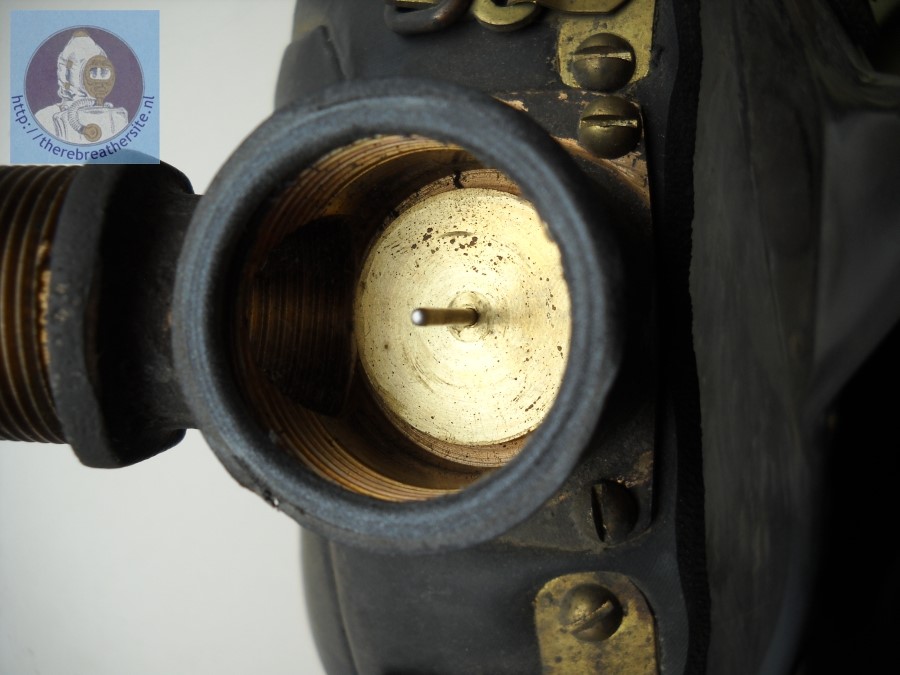

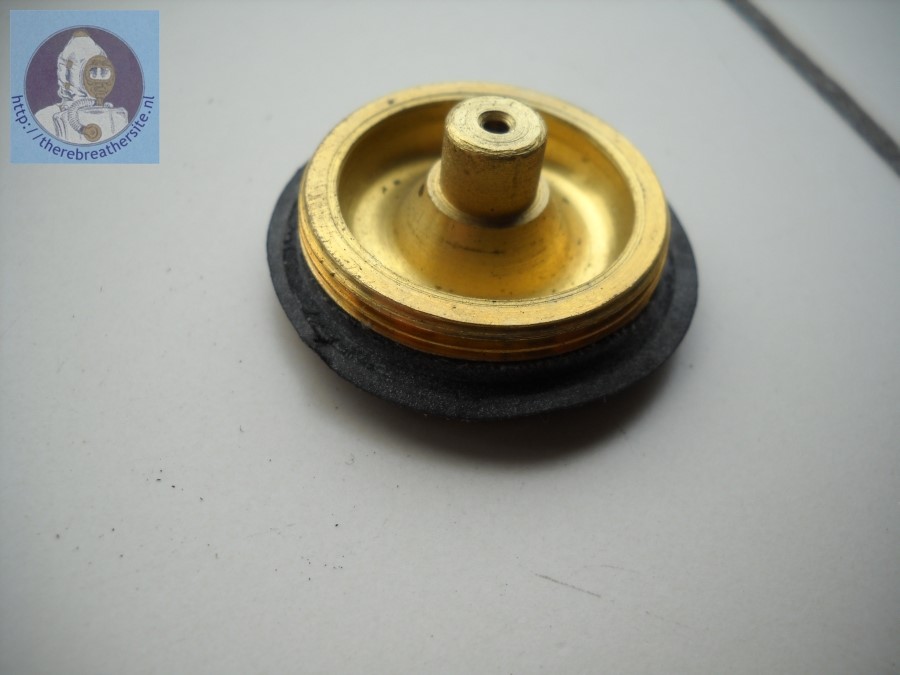
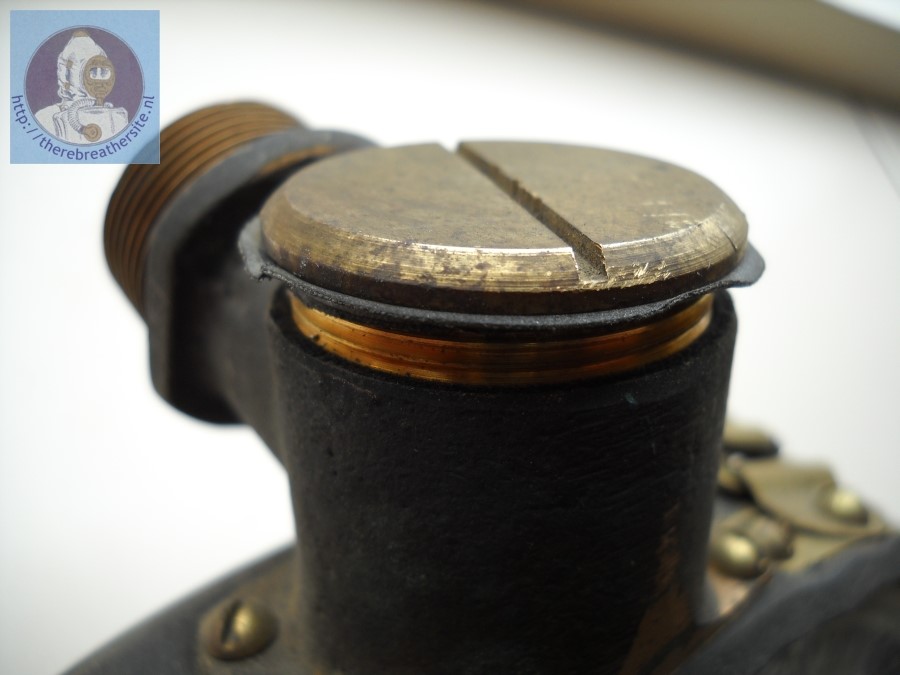
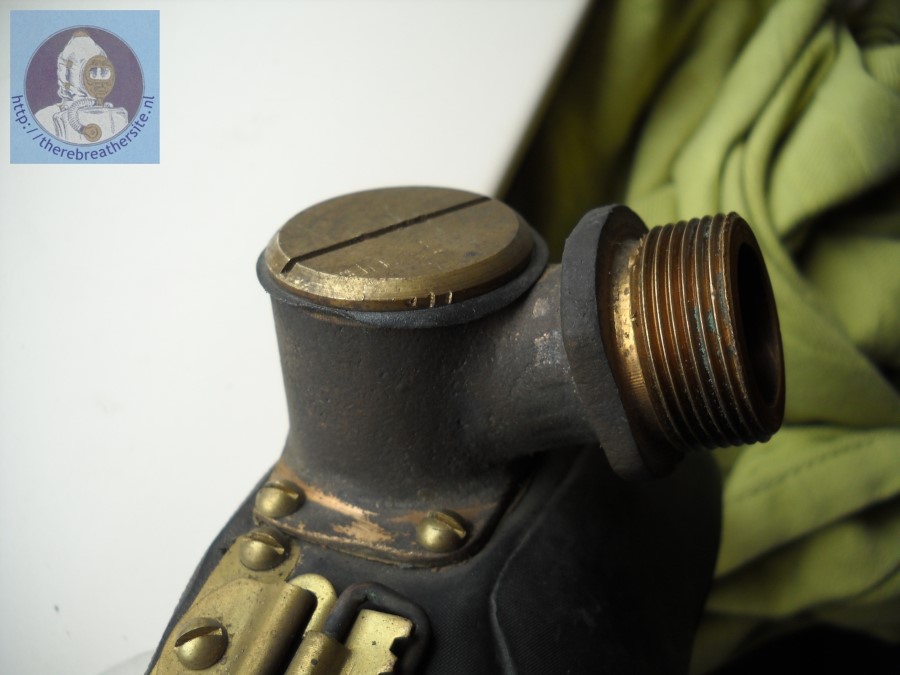
Oxygen bottle

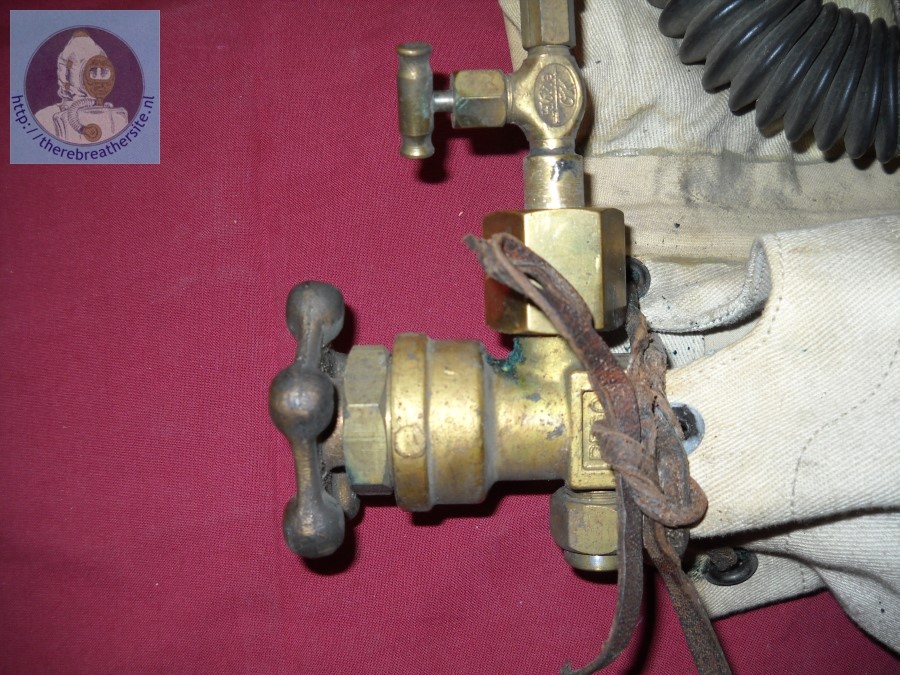
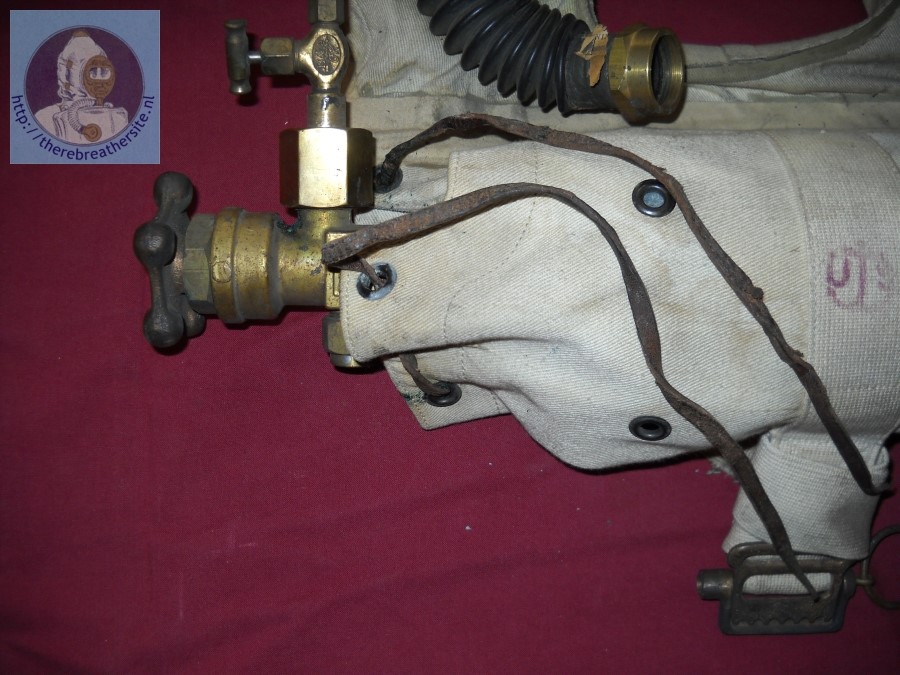
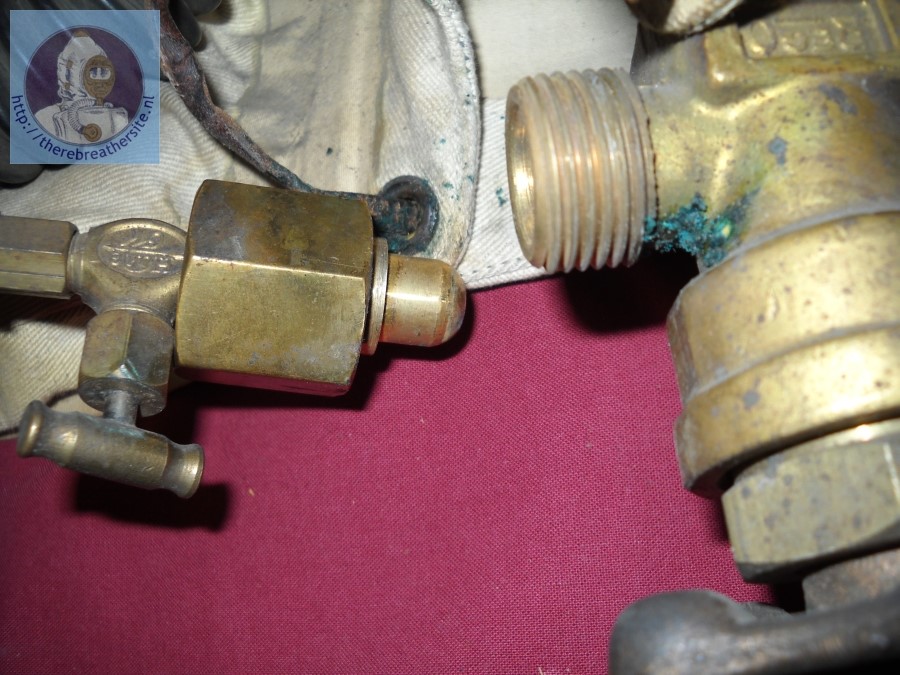
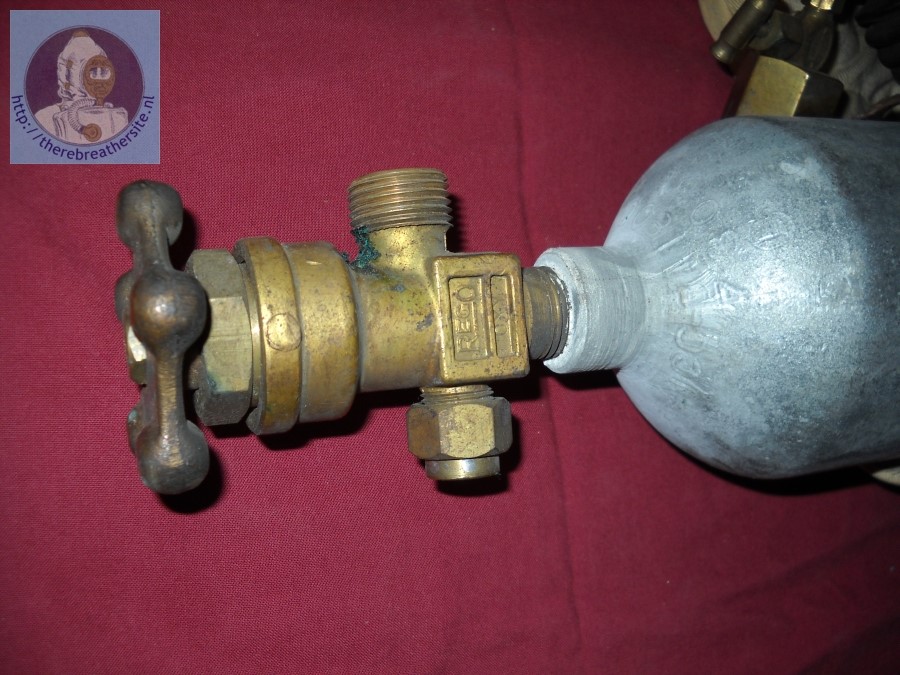
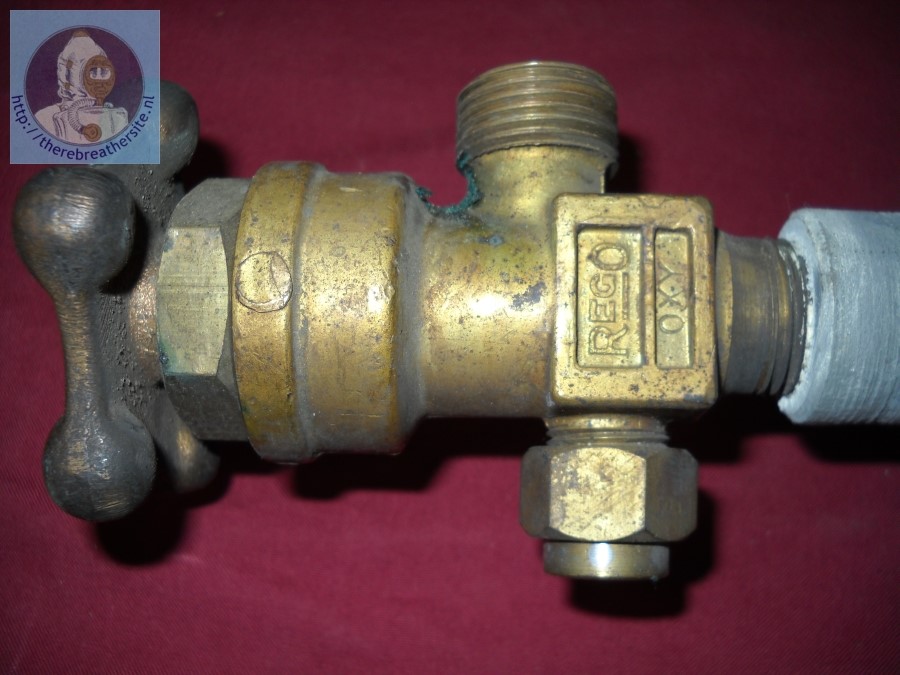
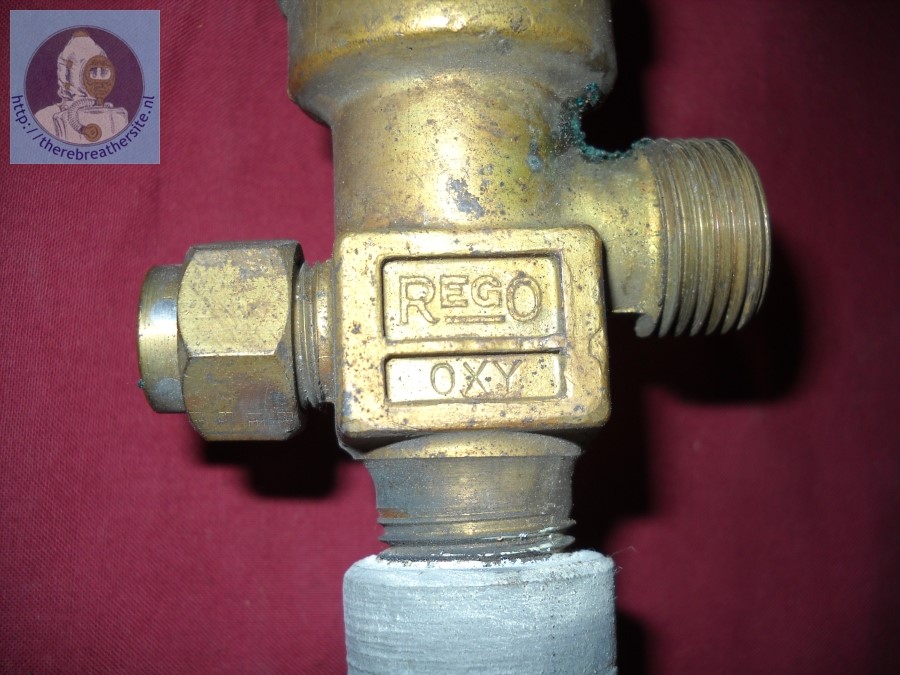
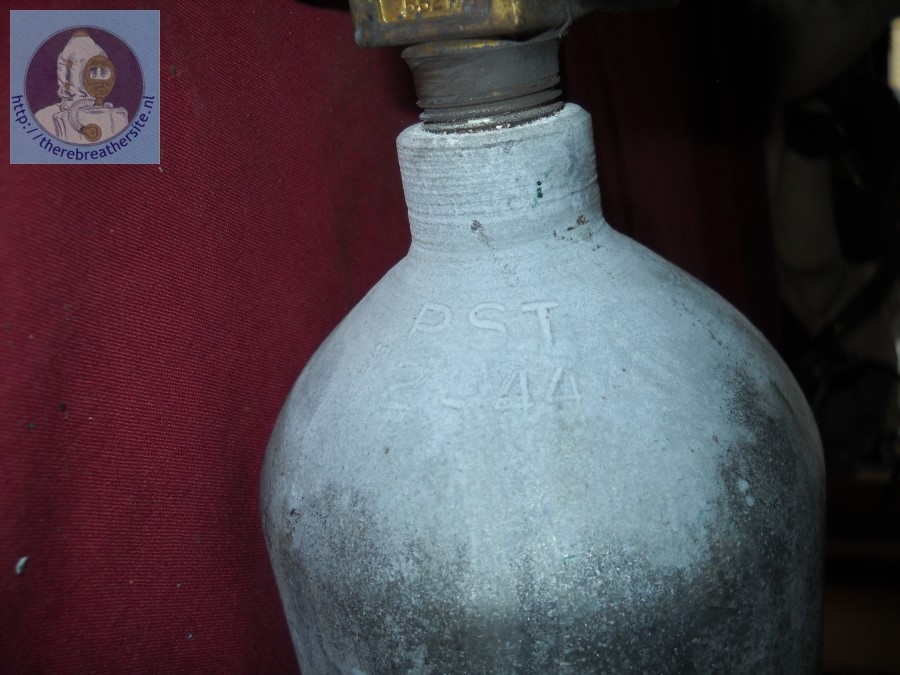
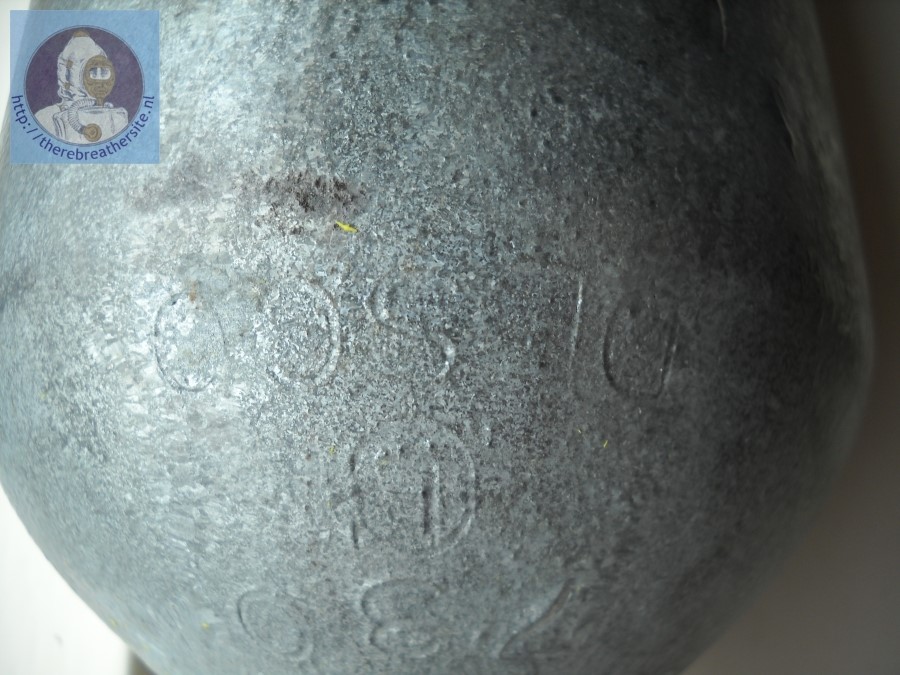
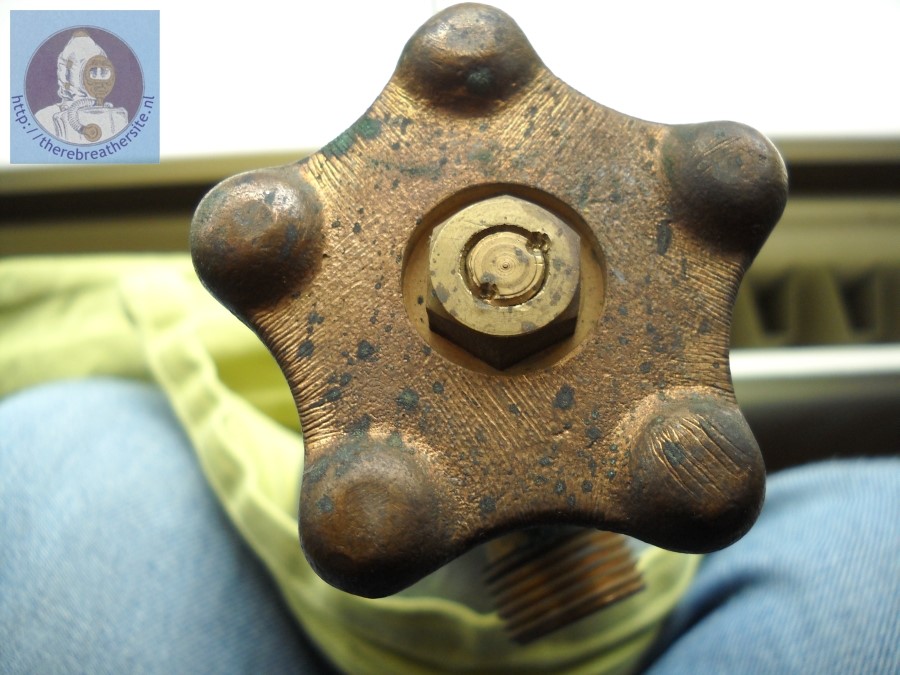
Metering valve
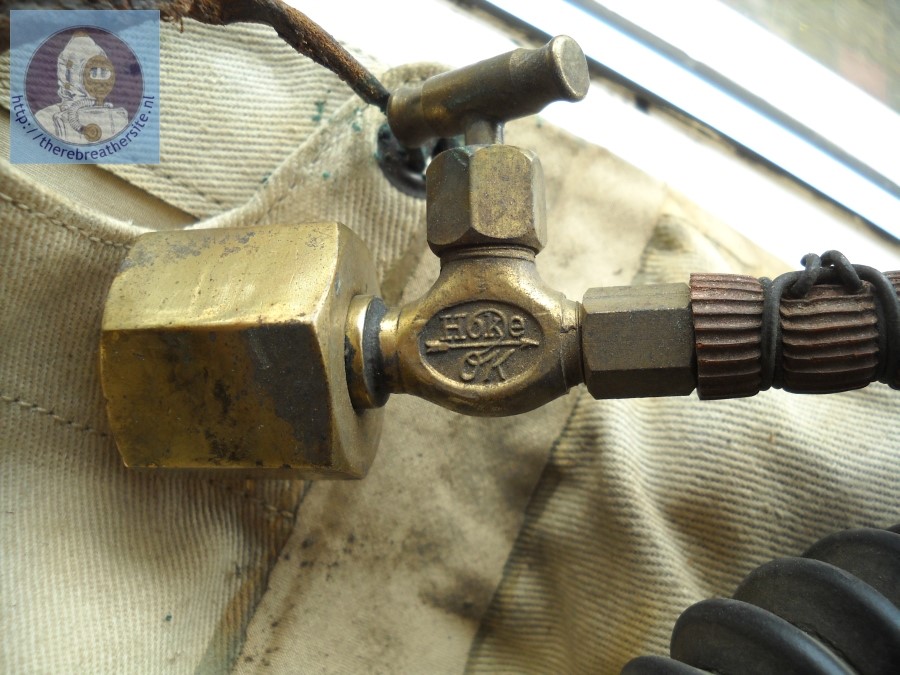
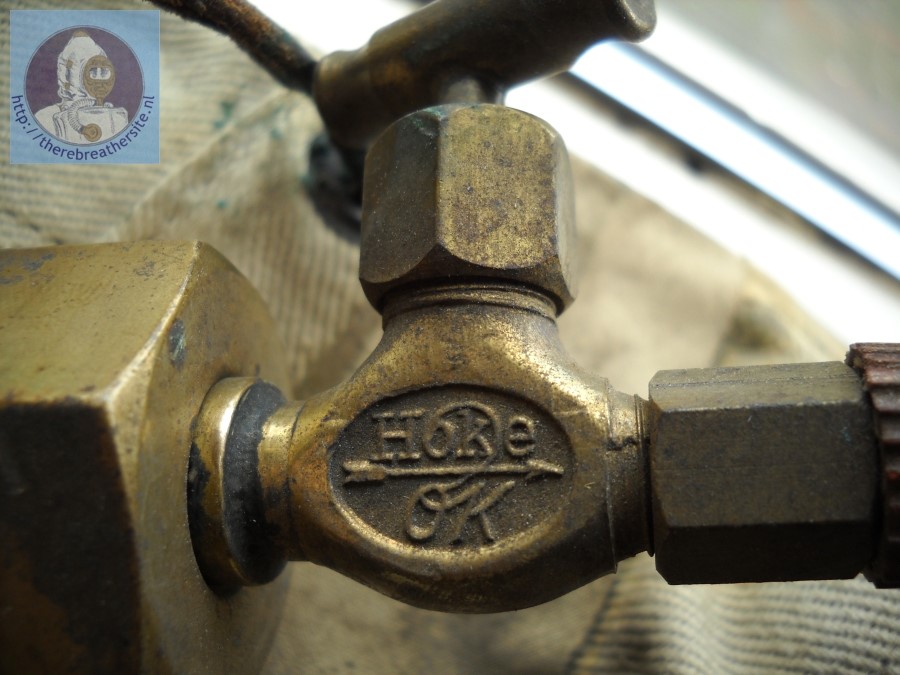

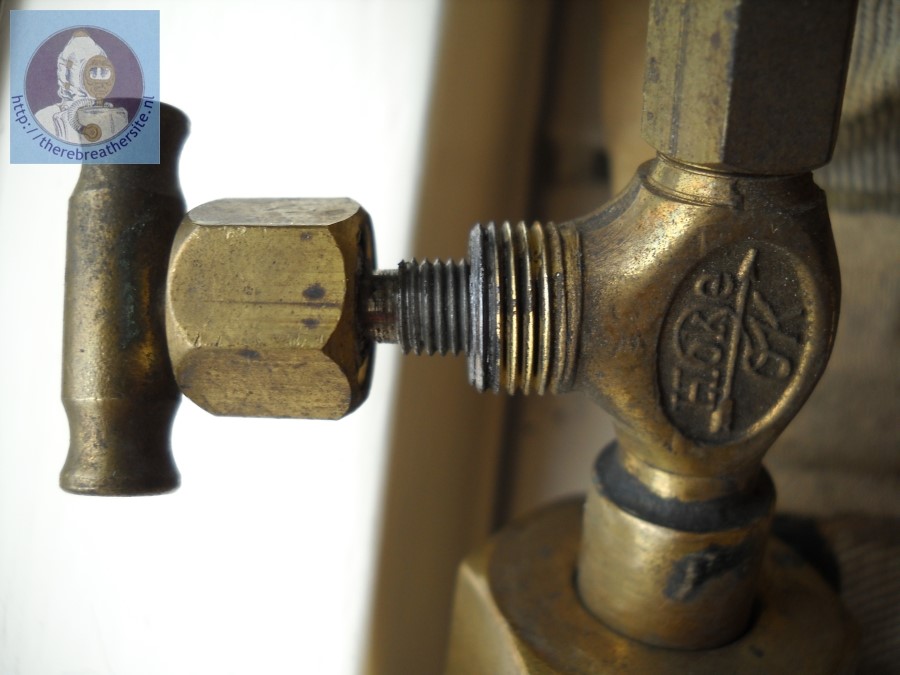
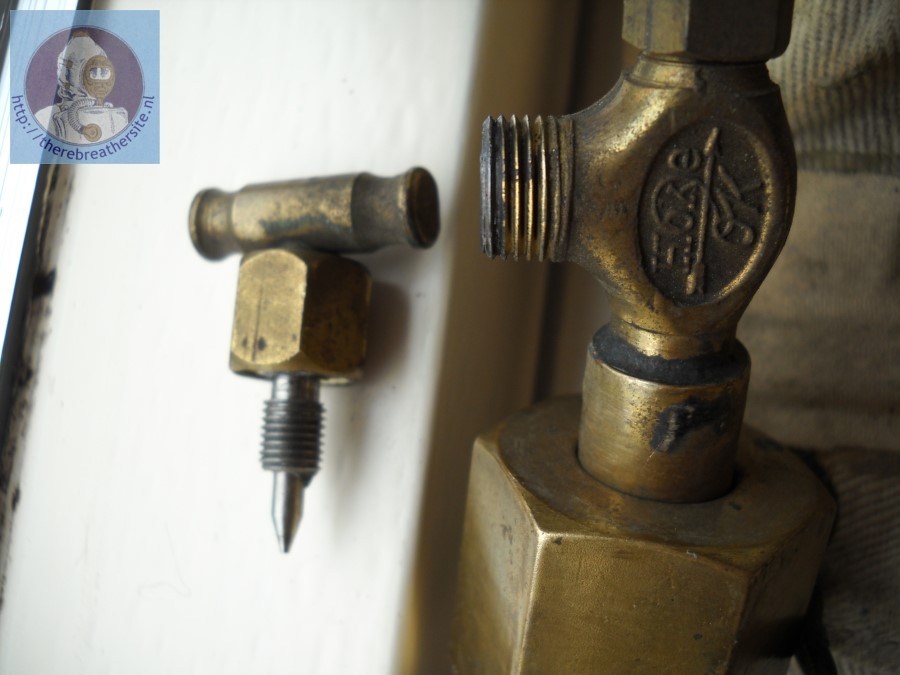
Weight Belt
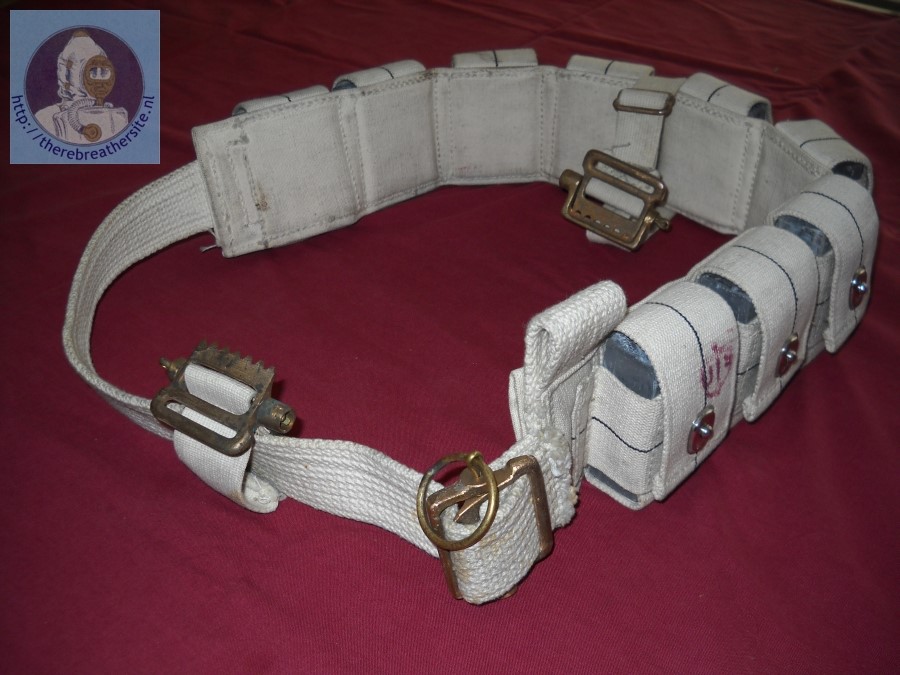
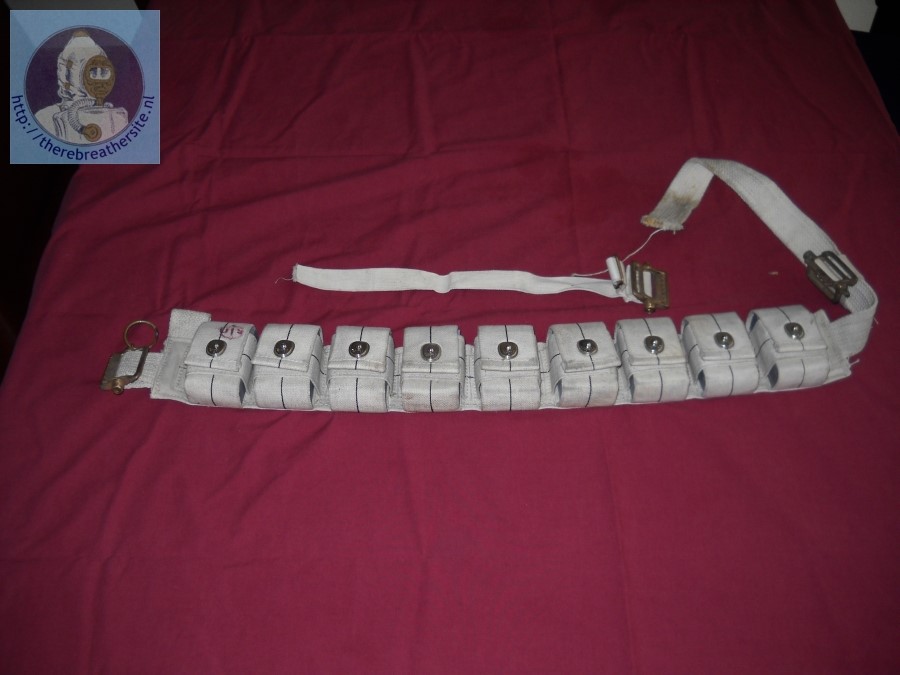
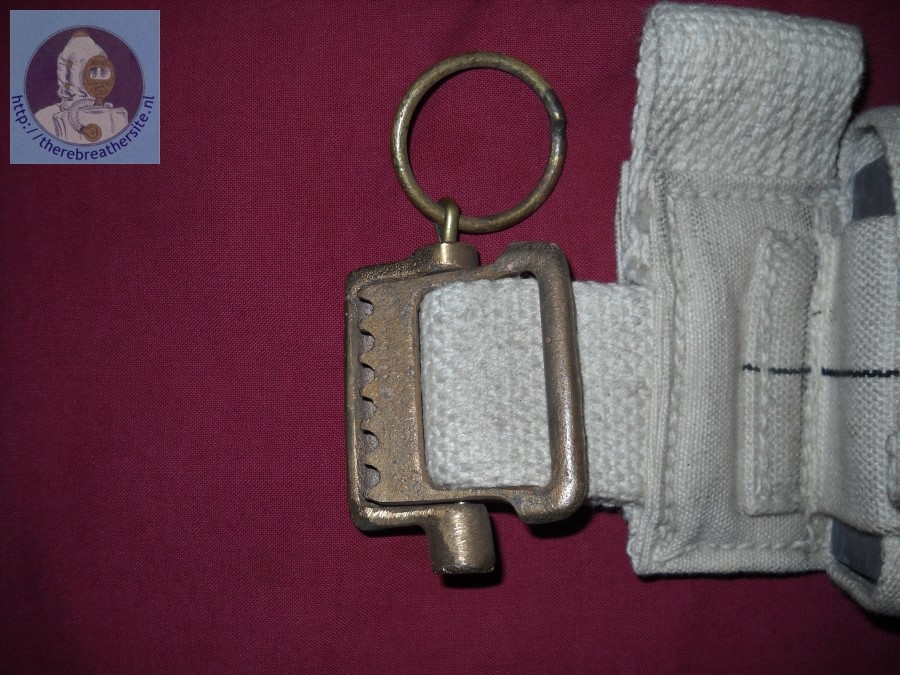
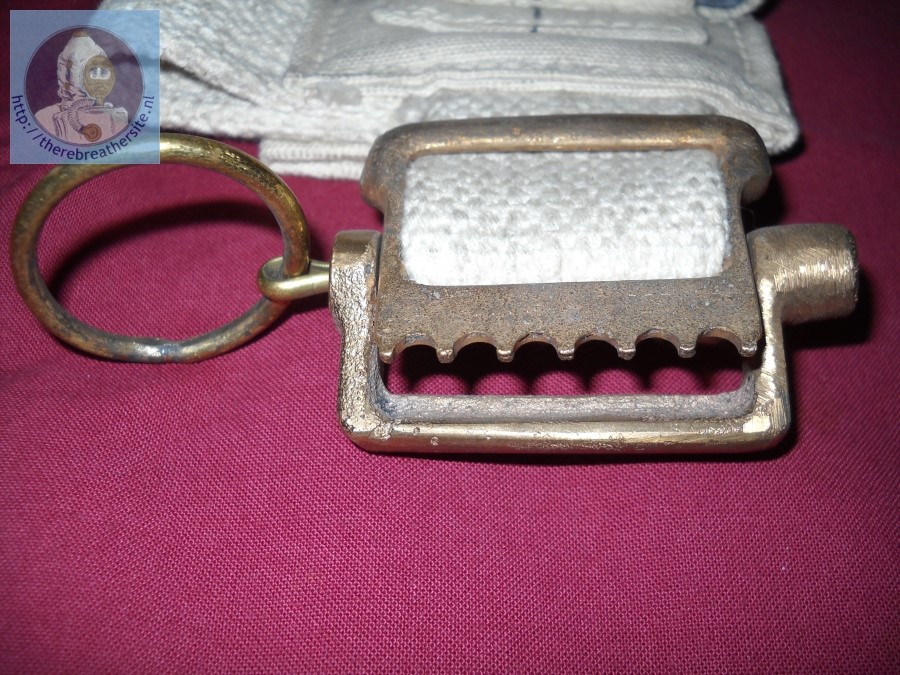
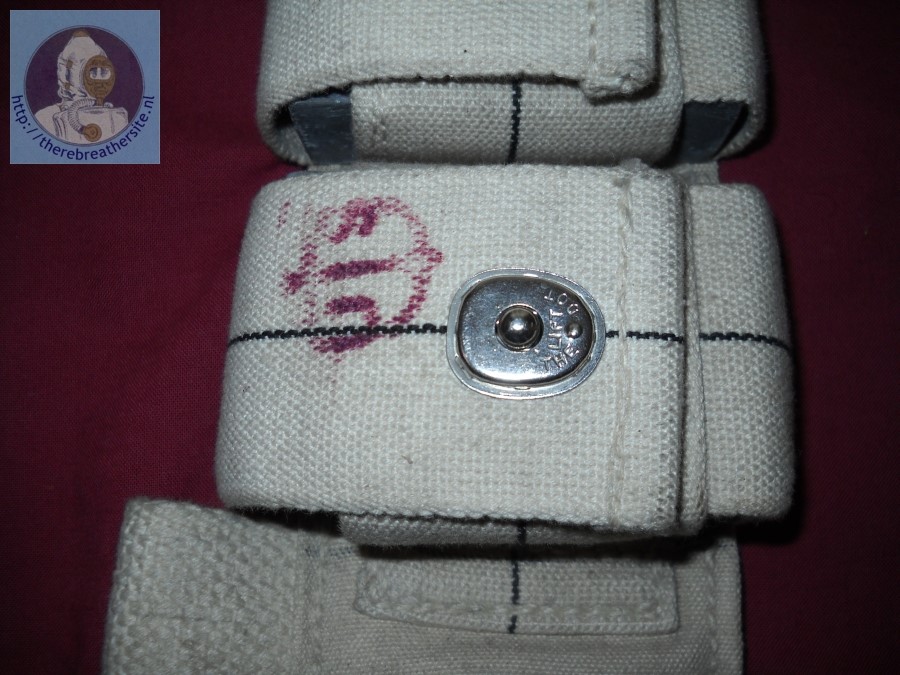

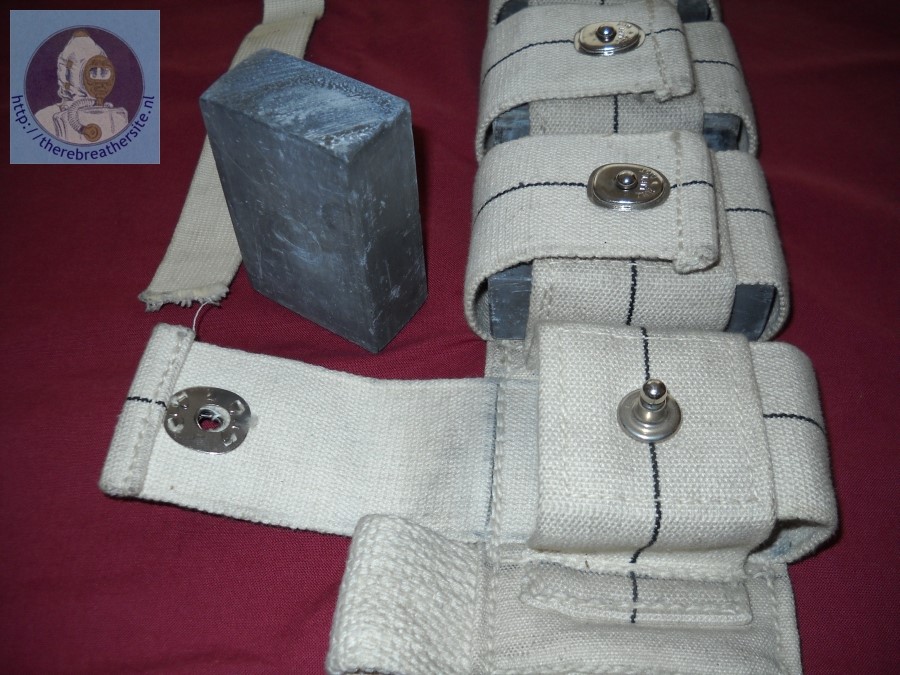
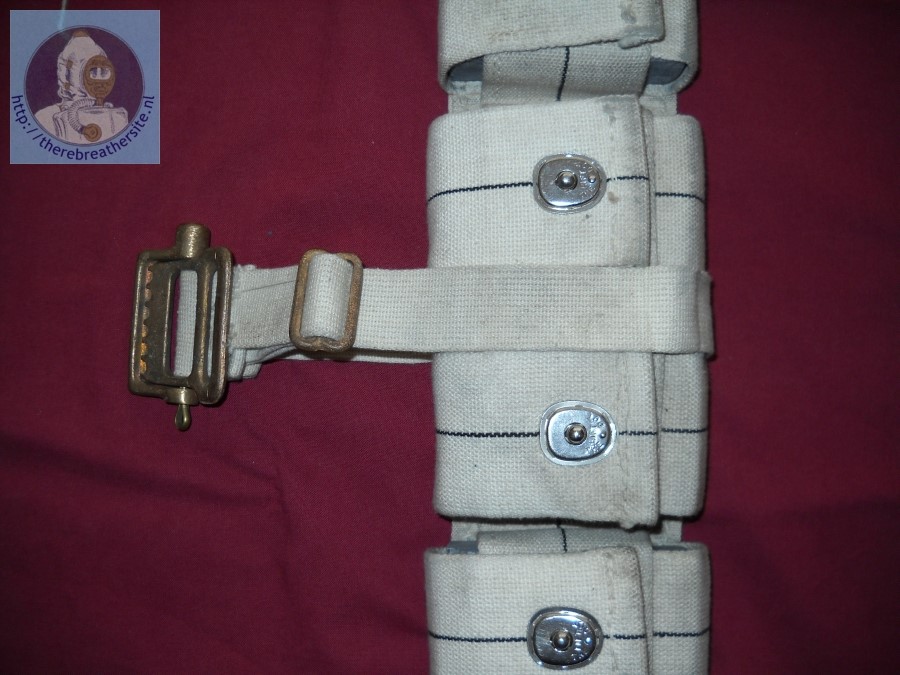

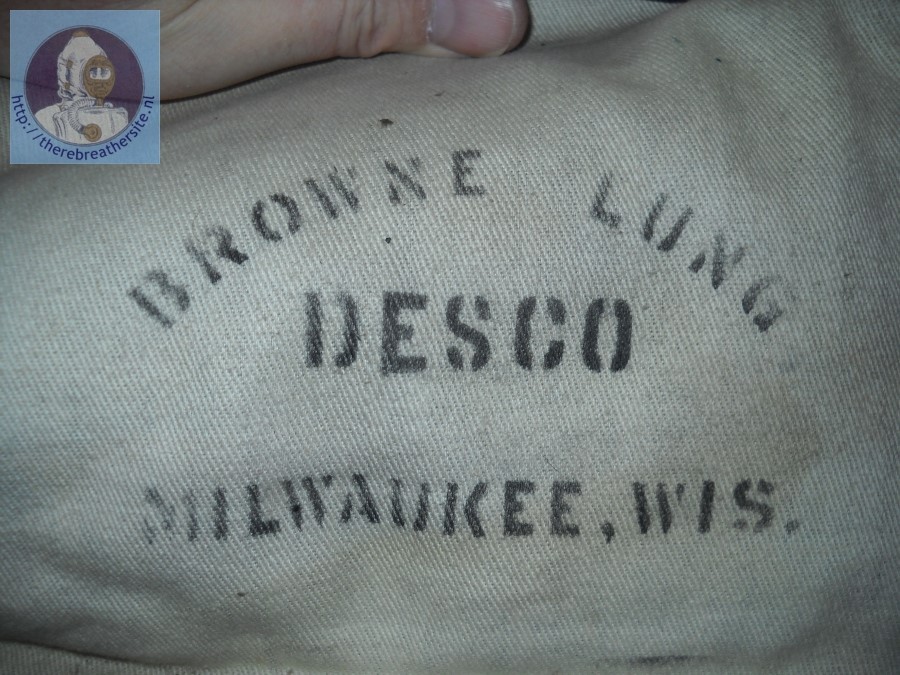
So, that was all folks! If you have any information about the B-lung or other Desco rebreathers, please send it to jw.bech@quicknet.nl
Hello Jan Willem,
My history person has come through!
He says:
That is an old 300 series valve 1/4″ MNPT on both ends, on the hose side it had an adaptor to accept the hose assembly as a push on, this was actually a bomber high altitude oxygen vest. The 300 series valves were manufactured by Hoke in Queens, NY by the Joseph Hoke Valve Company between the years of 1943 to 1949-1950.
There should be some other data on the opposite face of the valve as well.
I hope this helps. If you have further questions, please let me know.
Regards,
Sherri
Technical Support Engineer
CIRCOR Flow Technologies
Hoke Products
405 Centura Court
Spartanburg, SC 29303
Direct: 864/595-5166
Fax: 864/587-5608
sherri.rice@circor.com
www.hoke.com

Therebreathersite was founded by Jan Willem Bech in 1999. After a diving career of many years, he decided to start technical diving in 1999. He immediately noticed that at that time there was almost no website that contained the history of closed breathing systems. The start for the website led to a huge collection that offered about 1,300 pages of information until 2019. In 2019, a fresh start was made with the website now freely available online for everyone. Therebreathersite is a source of information for divers, researchers, technicians and students. I hope you enjoy browsing the content!
